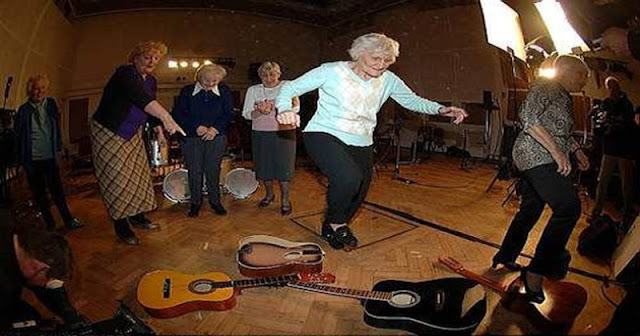You
Are Never Too Old
You
Are Never Too Old
is
the title of a book-in-making. I will publish the chapters
here and invite comments and suggestions.
Dedications:
This
book is dedicated to the memory of Charles Eugster who started body
building at age 85. It is also dedicated to Mark Pritchett, musician
and financial advocate who, with his friend John Marks of Malta gave
me hope when I most needed it. And, of course, it is dedicated
to Ian Anderson and Jethro Tull.
--JM
All
You Need Is Love
Was
John Lennon right? That all you need is love?
The
fact is that loneliness is a bigger health risk than either smoking
or obesity. We are social animals.
“You’re
never too old to rock and roll if you’re too young to die”sings
Ian Andersen. But you don’t want to dance alone.
For
Whom The Bell Tulls
Jethro
Tull is Andersen’s rock group.
Andersen
is Scottish but the group is named after an English
agricultural innovator and farmer, born in 1674. They
hark back to the land, to nature and a lot of their songs are about
loneliness.
Andersen
is 70.
Aqualung,
for
example, is about an old homeless man.
Sun
streaking cold, an old man wandering lonely
Taking
time, the only way he knows
Leg
hurting bad as he bends to pick a dog end
He
goes down to a bog and warms his feet
Feeling
alone, the army's up the road
Salvation
a la mode and a cup of tea
Aqualung,
my friend, don't you start away uneasy
You
poor old sod, you see it's only me

The
album “You’re Never Too Old to Rock and Roll” was based on an
idea for rock musical. An ageing and retired rock star named
Ray Lomas wins money on a decadent quiz show but finds that society
has changed so much that, with no one like him anymore he has no way
of enjoying his money the way he did in the 1950s.
Yes
-- loneliness and lack of love again.
Lomas
decides to commit suicide via a motorcycle crash but fails and lands
himself in hospital in a coma for an undetermined amount of time.
When he awakes he discovers society has changed and his style of
dress and music are now popular again. In addition, the
advanced medicine he is treated with after disfiguring his face, and
damaging his body, in the crash makes him look 20 years younger.
He has become and overnight sensation with youth who are now trying
to dress, and act, just like him.
So
– don’t give up hope!
When
Humanity Was Young, the Old Mattered
Ray
Lomax things come full circle. Sort of….
It
is only a circle in two dimensions. Three dimensionally it is
a vortex.

So,
yes, things come round but they are not quite the same. To
understand this phenomenon we have to look at evolution.
Imagine
a xenobiologist from an alien universe visits Earth.
He
would look at the various theories of human evolution and then at
humanity and shake both his heads. “Intelligent Design?”
“Survival of the fittest?” He would laugh again. From an
objective point of view, human social systems and technologies are
out of sync with our basic biology which evolved thousands of years
ago to adapt to specific conditions. Like the Dodo we
are just waiting for something to come and kill us.
Evolution
is driven by availability of resources, and of course by competition
and threat. So the Dodo had lots to eat – little competition
and few threats – until human beings arrived.

In
other words, the end of evolution is not godhead, whatever Arthur C
Clarke thinks. Evolution can as easily result in regress as in
"progress". Use it or lose it.
Modern
human beings – Homo
Sapiens
– at first coexisted with other human species – the
Neanderthals, Homo Erectus and Denisovans – who then
disappeared. Some people assume interbreeding was the
reason. Others suggest we killed them off. Still others
say that these ‘other’ species could not compete as
Homo Sapiens populations increased. Another explanation is
that the other species were nomadic and if you couldn’t walk fast
enough to keep up, you were left behind. The Neanderthals
didn’t look after the aged.
That
is, of course, also true of human nomads.
Homo
sapiens
was at first nomadic.
But
then, thirty thousand years ago – something happened.
The
proportion of older people among modern humans suddenly boomed.
Mortality was still high for the young – but old people increased
five-fold largely because they were looked after and valued, as a
source of wisdom and experience. It was the elderly who held
tribes together – and gave them stability and strength – social
smarts with which other proto-human species could not
compete.
Our
ancestors, however, had found that in the wetlands around estuaries,
food was plentiful and they learned to grow crops as well.
They had still not developed agricultural society – they still did
not have a sense of property or individual ownership. They
lived in collectivist societies of a few hundred people each where
hoarding was abhorred and there was little, if any, sense of
hierarchy. They were healthier, bigger and stronger and made
better tools.
Older
people were relied upon for guidance and wisdom. They were the
best tool makers. They were the best counselors. They
were the story tellers, the healers, the spiritual and cultural
guides. When they prospered, their societies prospered.

Then,
of course, came agriculture, notions of property, new technologies
and writing – and with these things – inequality.
Suddenly,
people were shorter, weaker, less healthy and aged quickly.
Empires
rose and fell, usually with an average lifespan of just 300 years.
Feudalism appeared and disappeared, thanks to new technologies,
cities, and new diseases. Finally came the Industrial
Age and Age of Nation States . Today, ironically we are in some
respects reverting to our Neolithic beginnings. Not exactly
“full circle” as I have said . It’s a vortex.
The
Invention of Youth
To
understand this more clearly, we need to look at the age from which
we are emerging.
Industrialism
and nationalism needed young people. Young people
had energy – although they had be trained to conform and take
their places in the large, newly invented hierarchical “nation
states” since they were inevitably at the bottom. They were grist
for Blake’s “dark and satanic mills”. They worked, they
got old and they died.

In
the early 19th Century, we invented the idea of the “child”
whereas previously we had had infants and young people.
The “child” concept romanticized and infantilized young people
until the age of puberty at which point they clearly became “adults”
who could procreate and fight wards That became a
problem in the mid twentieth century with new technologies. It
became more important to keep you adults off the job market and
educate them in higher level technologies. So we invented
“teenagers”.
Industrialism
and nationalism depended on taxonomic logic – that is
classification and categorization. Today we see it very
clearly in the way we divide schools into grades and assign social
class according to your higher education and also in the way we
distinguish between children, teenagers, adults and finally the
Old.
In
the 19th Century, the Old tended to die young -- but
those who survived were usually looked after at home. In the
mid and late 20th Century, , people past retirement age were
often shuttled off into “homes” where they expected to die.
Of course, if you were wealthy or privileged – you became a
politician!

Today
technology has evolved, even if human beings haven’t. Robots
do the work. 3 D printing technologies mean smaller
factories. We don’t need young people much – except for
war – if you don’t have resources for hi-tech warfare. So the
social model that went with industrialization is changing
In
the OECD countries, families are smaller, fewer children are being
born – and fewer are needed since technology is increasingly
automated and the number of workers needed decrease every
year. Education? It is quickly
obsolete -- so degrees and certificates are designators of social
level only, except in medicine, science and technology, which
demand lifetime self-education.
For the average college
graduate, his or her diploma is just another way of
defining social class and privilege. Or was
– since clearly such accreditations were clearly limited.
“Youth”
and the institutions that support it are increasingly obsolete.
We are always going to have young people-- but they will never again
receive the priority they have had this last one hundred years
–especially now that mankind’s greatest problem is to reduce
population levels --not increase them. If populations
drop by half, we still have too many people. Populations need
to drop 75%!
What
we need are active older people. The Young Old, Mark
Pritchett calls them.
The
Greatest Generation was the last generation to really believe in
“retirement”. For the Boomers, who vowed to never trust
anyone over 30 , it is “you’re never too old to rock and
roll”. Which is good in a quickly changing
world, characterized by information overload, with all values
temporary, and advanced machine intelligences on the horizon, we
need the experience, the wisdom, the memories and the love and
humanity of those older than us.

It
is perhaps fortunate that a lot of older people simply cannot afford
to retire – or don’t want to.
So
we need these people “to be fit”.
This
is because “mass societies” are breaking down with greater
emphasis on communities – or, if you like, tribes. And just
as in the beginning, it is old people who help keep it together.
The
Fitness Spectrum
Remember
the “four freedoms”. There are four fitnesses,
too.
Physical fitness
Mental
fitness
Social
fitness
Spiritual
fitness
You
can’t really have one kind of fitness without the others.
But
“spiritual”?
Some people automatically recoil when they see that word.
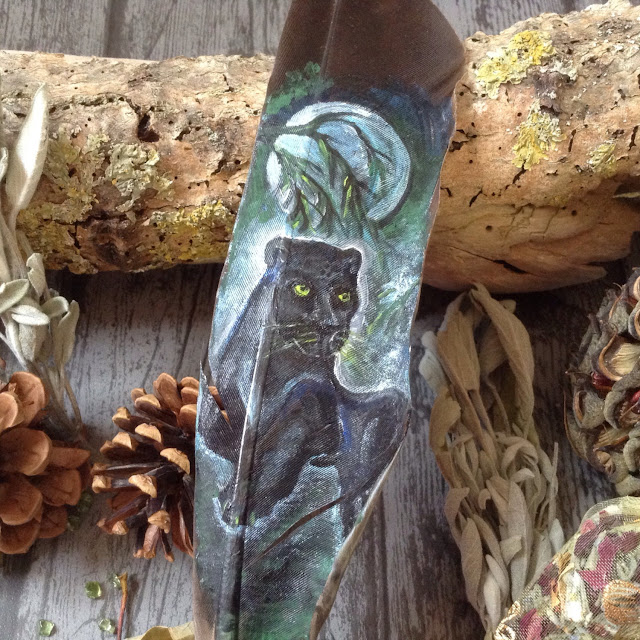
But
“spiritual” not the same as “religious”.
An atheist can be “spiritual” and a religious person may not
be. “Spirituality” as I define it reflects the unique
structure of the human brain which has special areas that allow us
to transcend our own individuality and perceive the universe
holistically.
Freud called it an “oceanic
feeling”. Buddhists see it as satori.
Artists call it “inspiration”. “Spiritual” includes --
but is not limited to religion, art, dance, song and creativity in
general. Consider: we are the only animals with these things,
except maybe whales, who sing. And no matter how “spiritual”
is characterized all people have it to some degree. And it is
located in the brain. A quasi cognitive function.

For
the ancients it was essential to survival because it was the essence
of creativity – and also because enhanced the sense of community
that we all need – getting back to that “love thing”.
Today, ironically, you might have to a rock concert and you
will feel it.
You’re
never too old to rock and roll. But you need someone to rock with.
And the feeling has to be visceral -- not digital.
So,
naturally, “spiritual fitness” ties in with “social fitness
and also mental fitness. And these three help make physical
fitness possible, too.
More
about his later.
The
Dunbar Limit and the Vortex
Societies
are evolving fast as they “gray”, with greater attention to
fitness issues and breakthroughs in geriatrics. That’s the
good news. The bad news is that social
institutions haven’t evolved far or fast enough—we are still out
of sync with our basic natures as the intelligent animals we evolved
to be thousands of years ago. That means, you can’t leave
everything up to the government if you want to live a longer,
healthier life – you are going to have be smarter – and consider
who and what you are – which is still a Paleolithic hunter and
gatherer. That means community.

Our
ancestors lived in small groups, often just 25 people -- rarely more
than the Dunbar
limit considered the maximum size for any cohesive community
--a maximum 400 people Most human beings still live in
communities no larger than 400! But your "core"
relationships are just 5.
According
to Dunbar, social media has only reinforced his conclusions. He
explained that a recent analysis of one million Facebook pages
showed that the layers of friendship (most intimate, best, good,
just friends) are the same size as they are “in real life”
(about 5, 15, 50, and 150). What seems to happen, Dunbar said, is
that Facebook introduces “a few extra people” to the outermost
layer of casual acquaintances (people you know but wouldn’t send a
holiday card), which can extend out to 500 individuals. Facebook
confuses things by calling all of these relationships friends. But
while Facebook probably slows a relationship’s “rate of decay”
when you no longer meet in person, he suspects social media won’t
stop a more intimate friend (say, in the 15 or 50 category) from
moving into a further-out ring if there’s no longer any
face-to-face contact
We
were tribal once. We still are. The vortex turns and rises.
At the center is love. Yes, “all ya need is love”.
As
King Cole reckoned that ‘you will never grow old, not while there’
love in your heart.
The
Zimmers is a rock group of 40 pensioners. Combined age: 3000
years.

Studies
consistently suggest that older people are "happier" than
say people in late middle age or their 20s. But "happiness"
statistics are remarkably unreliable -- even more than political
polls-- largely because "happiness" means so many
different things to different people.So, "happier" doesn't
necessarily mean "happy".
Now
comparing an old person with a middle aged person is difficult
because they usually have different issues. The key issue for
older people is community. Studies show that elderly people
who live in the community fare much better than those in
"homes".
Activity
and social engagement are the highest determinants of successful
aging. Isolation on the other hand kills.
Clint
Eastwood says that one reason he never "retired" was that
his father did in his 60s -- and died. Eastwood did some of his best
work after 70!
Yes,
older people might be happier. But then the questionnaires go to the
living, not the dead -- the ones who didn't survive transition to a
different way of life -- for whom that transition was traumatic.
Chapter
II
Social Fitness
Loneliness Kills
My
grandmother had spent years looking after the kids. She
had her own apartment with lots of memorabilia but she lived
half the time at my parents place which had lots of room.
The kids, of course, all eventually left home, leaving lots of
bedrooms,
My
mother was fine with Grandma when she was useful -- babysitting
-- but when it was clear that the old lady was having troubles living
alone since, without kids around, there was no reason for her to stay
over -- she decided to move Grandma into a home.
So
my Mom and her brother sold off the apartment. I think my
Uncle had always thought that Grandma would just move in with my
mother. That didn't happen. My mother took all of
my Grandma's furniture which she has always coveted. Why my
Grandma allowed this I don't know -- but she trusted her kids and I
think she thought that the "home" she was moved to was just
temporary.
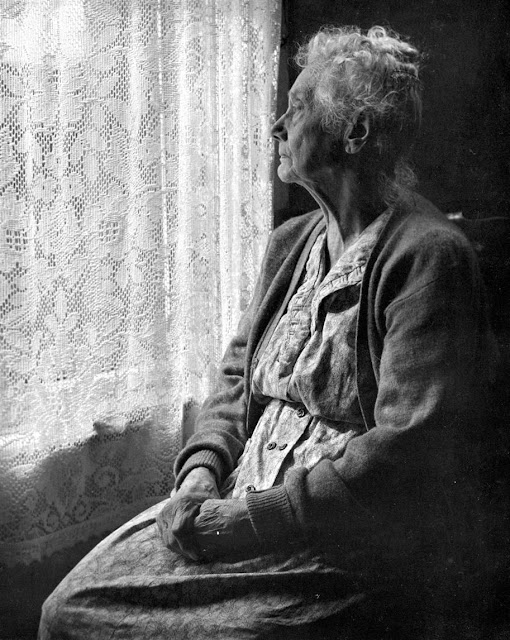
But
that didn't happen. She ended up in a tiny room shared
with another old person. It was conveniently -- perhaps intentionally
close to where I lived -- but I was already contracted to work
in Japan.
Now
Granny was still active and alive. I would occasionally
take her to student pubs. Oh my, how she lighted up! I looked
after my Grandma before I left as much as I could. But I had to
leave Canada. I complained bitterly to my father, who I thought
might listen. He didn't listen, of course. When I
left and there was no one. She died shortly after. She
had no one to depend on.
I
didn't hear about her death for three weeks after it happened when I
phoned my mother who said, "Oh we didn't tell you because we
thought you didn't care. Because you're in Japan and you have
deserted your family".
Sometimes
those closest to you are most cruel.
Now,
from this you might assume my Mother was a monster -- and and an
exception. She was in fact an exceptional woman -- charming,
intelligent, gifted -- but also emotionally stunted and an insecure
narcissist. However, there are other points of view. Nothing is
black and white.
Her
comments to me on the phone were hurtful. However, I now think
that she didn't want to tell me about my grandma because, I
think, she felt terrible guilt that she could not face until her
later years, when she died alone and without any real friends. And
she knew I would judge.
After
all, my mother was always trying to beat into her children's heads
that only "family" could be trusted.
But
ultimately my grandmother had a measure of responsibility too. She
had put all her eggs in one basket -- assuming that my Mom would look
after her. She had no one else really. No close friends
and she wasn't close to my Uncle's family that much.
She
was still mentally fit when my kids convinced her to move out of her
apartment. If she had refused to move or suggested giving her
things to my uncle to look after -- my mother would likely have taken
her in. Old or not -- you need to be a little canny. Lesson
to the still living: don't give away the farm.
That
said, every family is different. But every family has
unique problems. although most people want to think their families
are "normal" even when they are not. When I was
growing up, I thought I was the only one with a dysfunctional family.
Years later, I found out I was just one of many.
My
lawyer friends tell me that family members are the worst people to do
business with. Things get complicated fast.
If
you are lucky and can rely on your family -- or if your culture
demands that your family look after you, with respect and love
-- as is the case in Russian or Sikh society -- wonderful!
If
not, you have to create a new
family of people who care for you, friends and lovers. And be
careful with your own family.
But
the people who mattered were the people you chose instead of the
people who were yours by an accident of birth. Real family was heart
as much as, if not more than, blood.” ― Martina Boone,
Compulsion
My
grandma's story is more common than you would think. People
just don't like to talk about out that kind of thing too much.
Knowing the Place for the First Time
So
where do you start? A solid base of connection can result
from new friendships with old friends.
For
example, Rob and Dave both went to Argyle Secondary school in
Vancouver Canada back in the 60s, a new school with students from
mixed mixed socioeconomic backgrounds, rich and poor.
|
|
Failure?
Bryan Adams Before and After
|
The
school no longer exists., For a while it was famous for the rock
star, Bryan Adams who was (according to legend) held up as an
example of a "bad kid" who would never come to any good.
It's said he later tried to donate his piano to the school but the
principal (who had been a badass in his day)
turned him down. He gave it to his junior high school
instead.
Rob and Dave's fellow students mostly moved away
from Vancouver. Dave stayed on. Rob went to Vancouver
Island which is about four hours away from Vancouver by ferry and
car. Peter went to Cuba. I went to Japan. Others moved all over the
province and the country.
Time
went on: Rob and Dave faced retirement. They wondered
what had happened to everyone. There had been a 20th Reunion.
The 40th anniversary for their graduation was
approaching.
So they planned a reunion -- not just for the
first graduating class but the first two or three -- a lot of
people.
Somehow they tracked down everyone's email
addresses. Rob had been a bank manager and his technical skills and
diligence to detail came to the fore. In the process both Rob
and Dave re-established relationships or forged relationships with
people they would never have thought of as friends in high school,
surprising themselves.
Then
came the first reunion.
Everyone
was the same. Everyone was also different. Rob and Dave
devised picture name tags using pictures from the High School Year
book. The strategy paid off. New bonds were forged. Old secrets
divulged. " I had the biggest crush on you back then -- but you
never asked me out".
After
that came the 50th
Anniversary.
Now,
not everyone -- but a significant number keep in touch by
email.
Renewed
friendships. Most importantly new
friendships.
Rob and Dave cared.
They created something. -- that made a lot of people happier.
I am sure that very few of the Argyle people are lonely -- or likely
to be abandoned like my Grandmother -- but in 10 or 15 years, who
knows? Maybe, just maybe Dave and Rob have saved a few lives.

Facebook
is a cocktail party. Superficial personal PR. As is LinkedIn.
Nothing substitutes for a hug.
Email
can supplement face to face meeting, if you
talk about your feelings and life. One needs to be real to
nurture a real relationship. But it is a give and take
process.
Mutual Well-Being
Yes,
that's us below. Well-Being means having friends and maybe
sharing a joke.
In
prehistoric times, our ancestors lived in groups of just 30
people or so; which meant you were never by yourself and there
was constant interaction. We needed each other to
survive because what we could expect from our environment was the
unexpected.
It
is true that nomadic peoples in difficult environments, abandoned the
old or the sick when they couldn't keep up. Or sometimes just
killed them. But this was seen as mercy killing.
Euthanasia.
Our
industrial society abandoned old people who were too considered too
old to work -- with the exception of the rich, of course, who never
worked anyway.
In
the prehistoric period, our ancestors moved to semi sedentary hunting
and gathering, which allowed them to look after the old better --
which they did. There was also an advantage to this because old
people were survivors and repositories of wisdom. In addition,
ancestral societies were highly egalitarian societies where
the Golden Rule was followed.

Our
modern society, on the other hand, is highly unequal,
with worth determined by function and status. And the Golden
Rule is Scratch my back and I'll scratch yours. Not very
altruistic.
One
of the most obvious features of modern society therefore
is segregation.
By this I don't mean black people not allowed to use white toilets --
but discrimination according to group identity --ethnicity,
religion, gender, sexual preference, social class, job
positions -- and especially age.
Identity
rules are enforced first in kindergartens. Boy, girl, of
course. But young, old. Age!
From there on segregation is by age. Everybody in grades.
IQ tests are relative to age, ignoring the fact that mental
development varies from person to person. This establishes a
mindset, which we think is somehow natural.

"Identity"
politics"? Self segregation,
of course. As I said, we think it's natural ,Women separate
from men. Blacks separate from Whites. Gays separate from
Straights. Young separate from Old. You have been
brainwashed -- to fit a pigeon hole with no room to spread your
wings.
As
soon as you discriminate by perceived difference -- you segregate.
No one is equal. All are different. And this provides a
rationale for social and economic inequality and other abuses.
I look much younger than my age -- about 15 years younger at
least. When I tell someone my true age -- there is a huge
difference -- so I usually don't.
We
accept a ageist utilitarianism than would make our most savage,
nomadic ancestors blanche. People in their societies had roles
of course -- but not so minutely defined. In some
American Indian societies, a man but didn't want to be man, a
warrior? Fine. He could be a woman. Which was not a demotion
because women called the shots on a most important matter. Age
in terms of number of years didn't matter -- but rasher
experience and fitness.
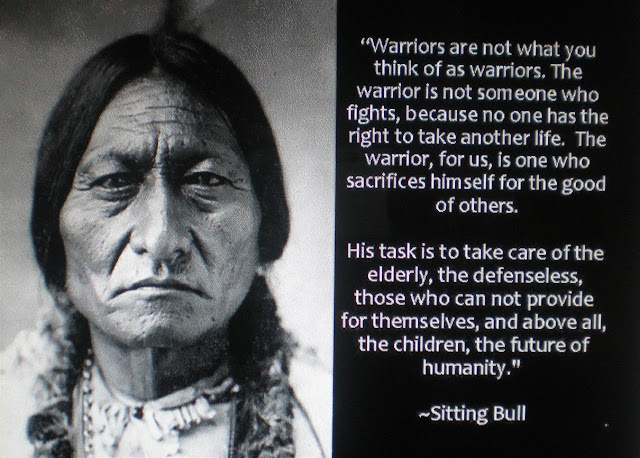
Hierarchies
Maslow's
"hierarchy of needs" is famous. And usually
represented by a pyramid -- which Maslow in fact never used, probably
because it implies -- for some people -- a "stage of life"
progression, meaning you start off as infant with physiological needs
and as you get older you must deal with other "higher level"
needs. This pyramid would further imply that "self
actualization" -- at the top takes age and experience to
realize.
There
are problems with this. The "pyramid" reflects our
industrial and consumerist culture -- which emphasizes the needs of
the individual. But, in much the world, culture emphasizes
collective needs -- which are the default in evolutionary terms.
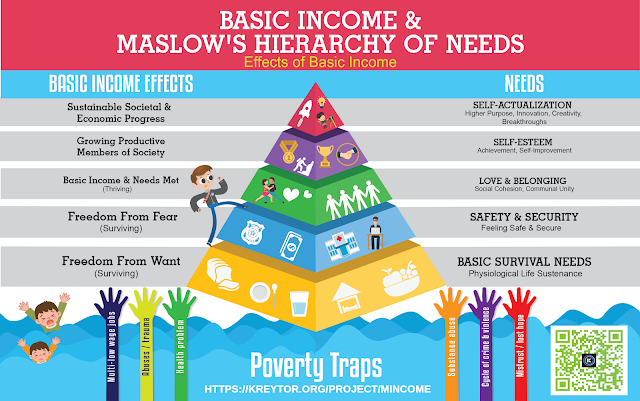
In
tribal groups, "self actualization" could be seen as
arrogance. The best hunter in a group is also the most
criticized. "Umm.. Yarek, that deer you killed is big but
kinda old" . "Sorry guys I'll do better next time".
So
the "hierarchy of needs" is ethnocentric. We also
have to consider consumerism which adds artificial needs.
A
further problem is that basic needs are co-extensive all ages. Yes,
children have self esteem needs, along with all the rest. And
the notion of "developmental stages" is really a cultural
thing.
This
is a mistake that tribal groups rarely make, since children are
regarded as just neophyte adults who can't make babies.
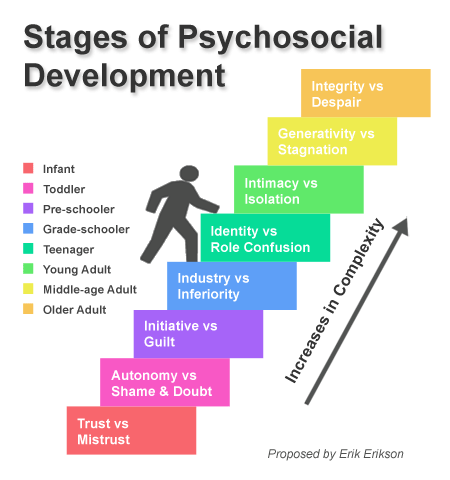
Think
about it -- didn't you actually experience all these "stages"
before the age of 12?
The
mechanistic logic of all large scale hierarchical societies,
which depend on tools is that they regard people as tools too --with
everything -- everyone -- sorted by an assumed hierarchy of
function. Nope, you're not a person -- you're a thing!
That means your "needs" are also determined by
"things".
Or
course, the owners of the tools in our multi-layered
individualistic society are in a special category.
To
a degree this puts the "Boomers" in a unique position in
today's rentier
society because many of those ex-hippies are "owners" and
not willing to just roll over and die. We will talk about this
later.
Going
back to those studies about "happiness" and older people.
No study can be informative unless it addresses the actual needs of
older people -- dumping the "pyramid" trope.
Ageism for Dummies
Ageism is
as bad as any of the "isms".

Keep
in mind that ageism is about all ages.
As I have said, each age group is segregated and suffers
accordingly. If you are old, you have something in common
with those who are young since the young have no immediate usefulness
either -- other than the potential to do something in the labor force
later.
Age
segregation also means that throughout life you continue to be in a
"grade" as you were in school -- that is, supposed to
have friends of the same age, interests and social position or
family. You can only do the things 'appropriate" for
your age group.
First
you are too young
for this or that. At the end, you are too old.
Let's
say you are 65.
Your
high school friends have probably moved away from the the old 'hood.
And you have little in common with many of them now. Your kids
too often move away. The friends who stayed around or friends
you made in your 30s and 40s have started dying off in your
twenties. Now who do you talk to?
Your
kids see you as Dad and Mom. Old!
But
these roles are pretty much irrelevant --except maybe for Mom who can
babysit as my Grandma did.
They
start planning to put you in a retirement home with a lot of other
people of the same age and sell off the old family home, which is now
worth a lot of money. Your
future? Solitary. Their
future. New car. Trip to Europe or wherever.
In
my mother's case, she rationalized that since she was now working --
albeit part time she didn't have time to look after her mother -- not
that Granny really needed much. My Mom also wanted to travel to
Europe and so on. On the other hand -- she had space -- and my
Granny's pension and savings would have bought a lot of extra help.
This
is a pretty common argument: "We just can't look after Granny
that well". On the other hand, this line of reasoning
doesn't wash at all in many cultures, including (as mentioned)
Russia.
Middle
class Boomers, as I have said are "owners". They are
also what Mark Pritchett calls the Young Old. At 70 you are
what 60 used to be fifty years ago.
The
Boomers' children are often rentier, middle aged and unhappy with
their lot. Which leads to the some children suing to take their
parents estate even when they have twenty years of life yet.
Even
if this doesn't
happen, there may be a kind of isolation and alienation. Not
with everyone, of course, but with many more than you think.
So
my Granny's case is not that unusual.
Getting
old sometimes
means being confined to a kind of subtle, social solitary. Rob and
Dave reacted against that.
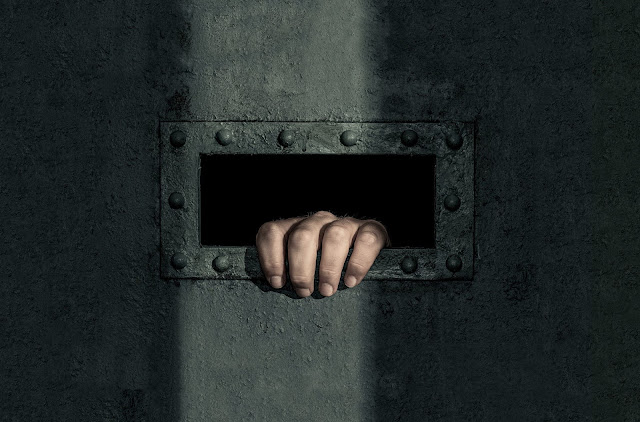
"Solitary"
, we are told, is a form of torture banned under international
law.
The
good news is that most people respond to the trauma of transition
positively as Dave and Rob did, creating new social networks and
living in the moment.
Rage,
rage against the dying of the light.... Be one of the
happy survivors.
Fighting
Ageism
.
In
Rock 'n roll there is never really a "solo" act.
There is the spotlight, yes -- but you always need an audience, a
venue -- and the and the songs come from somewhere.
For the most part, rock 'n roll is about the band --
about synergy.
And old rockers just keep on rocking.
In
tribal society, all ages and both sexes ate together, played
together and looked after each other.
So
what can you do? Become a joiner. Volunteer. Find
people who share your interests -- and don't care about age.
Integrate -- don't withdraw.
Leopold
Kuchwalek is a hundred years old and he teaches swimming to kids in
Berlin.
A
New York Times article, Relationships;
Making Friends Late In Life by
Sharon Johnson, quotes gerontologist,Dr Karen A Roberto:
''Not
everyone over 65 wants to spend his or her time with other senior
citizens,'' said Dr. Roberto. ''That is why some people who move to
retirement villages are miserable and move back to their hometowns or
other places where they can have interaction with people of all
ages.''
The
article goes on to illustrate this point.
Robert
O'Sullivan, a 68-year-old retired bookkeeper who lives in the Bronx,
considers his 14-year-old next-door neighbor one of his best friends
because he and the boy go fishing during the summer and to basketball
games in the winter.
''One
reason why the friendship has flourished is that both the kid and I
have lots of free time,'' said Mr. O'Sullivan. ''My son and other
middle-aged men in the neighborhood enjoy these activities, too, but
they are too busy with their work to join me.''
Mrs.
Katz is an older woman in the Bronx:
Flexibility
is the key to developing and keeping new friends, according to Mrs.
Katz of the Bronx.
''You
have to be tolerant and learn to overlook things such as a new friend
not returning your telephone call right away because the pool of
potential friends is smaller than it is for a younger person, and you
don't want to rule out good people unnecessarily,'' she said.
''Because we have fewer years available for developing friendships,
older people have to take the initiative and extend a welcoming hand
right away instead of waiting for the other person to do so.''
In
making younger friends, you also have to learn about their world
-- which is necessarily different from yours.
Not better-- different.
This learning process involves more "smart thinking".
Below: Selin Sun, 18, and Molly Kutapan, in her 70s, who have become friends through intergenerational work at Haverstock School in Camden
By
and large, a rule of thumb is that it is not the age of
your friends that counts but the ability to share.
As you will see later making friends with people your own age is fine
-- as long as you have similar interests and problems to transcend
the inevitable differences.
Below: Paul Crowson and Nicola Jackson in a cooking class
With
younger friends, difference is assumed from the beginning. And if you
have such friends, it is a reciprocal learning process -- with
reciprocal care. You will find that the segregative and
alienative aspects of modern society make everyone lonely.
As
always, flexibility is the key. Old people have an edge --
they've been through all this stuff before-- and they are freed by
age.

If
your partner is 15 years or more younger -- you will likely live an
extra 7 years.
Community
Industrial
civilization progressed by atomizing social life and destroying
community bonds. Remember the so-called Dunbar number –
the maximum number of people with whom you can maintain
relationships? It is just 200, which approximates the maximum
size of a Paleolithic tribe and is the average size of communities
worldwide. In practice, the first 20 relationships
are your tribal “clan”, which includes your partner or partners
and children and parents and siblings and close friends.. The rest
are the same tribe but other “clans”. Children belong
to everyone, once they have been weaned.
This
number tells us that we can only have communities of a certain size.
So the US of A is not a community -- it is many. And what
matters to healthy ageing -- or more correctly -- life -- is having a
community where everyone knows everyone and cares for everyone.
In
his recent bestseller, Outliers:
The Story of Success,1
Malcolm
Gladwell shares the fascinating story of the people of Roseto, Pa, a
town entirely made up of citizens who came from the village of Roseto
Valfortore in Italy. Intrigued by the extremely low incidence of
disease in Roseto, including no coronary artery disease in anyone
younger than 55, medical researchers in the 1960s dedicated
themselves to studying this phenomenon. The results shocked them.
Rosetans did not follow a healthy diet and obesity was prevalent;
they did not exercise; smokers were everywhere. Their relatives
living elsewhere had a high incidence of disease, ruling out a
genetic explanation. Nearby towns with the same climate and
environmental influences had an incidence of heart disease 3 times
that of their Rosetan neighbours.
With no answers offered by the
medical research team, social scientists were consulted. They
described a unique sharing of experiences that defined the town’s
social structure. They discovered a feeling of trust and security
among Rosetans because the people of the town always had someone they
knew and who knew them to turn to for support. They concluded that
the extraordinary health of this unique population could only be
explained in terms of “extended family” and “community
http://www.ncbi.nlm.nih.gov/pmc/articles/PMC2718612/
The
Rosetans live longer – but they don’t exercise. They’re
overweight and they smoke and drink – otherwise they would live
even longer, healthier lives still. The Rosetans grew up in a certain
culture. The fundamentals of health – diet and exercise and drug
use (tobacco, alcohol) are suboptimal for them – but social
circumstances are super-optimal. .
Yes,
but I don’t live in an Italian village, you say. But it isn't
just the Italians. You find communities like this everywhere.
And if you can't make one -- you need to make one.
As
John Lennon says, “I get by with a little help from my friends”.
Mental
fitness
Blindspots
How
do we reinvent ourselves at 65 or 70 or older? How do you
create a new family of friends and supporters--a new band for
rock and roll?
In
the chapter on Social Fitness, I began with the story of my Granny,
who was abandoned by my mother. On the surface, this looks
pretty black and white. Bad Mom. Good Granny.
But
my grandmother was still mentally fit when all this happened. She was
a bright woman, with lots of charm and intelligence and humor.
Ultimately
she
was the one responsible.
If
you are an investor, you don't put all your eggs in one basket. But
my Granny did exactly that -- depending on one person -- and denying
the fact that that person, my Mother, harbored a lot of ill feeling
towards her. Perhaps she thought her years of babysitting would
be repaid. But in families, such things are often taken for
granted.
Family
relationships are complicated because underneath the roles of mom,
dad, grandmother, grandfather, son, daughter, husband, wife -- there
are contradictory human needs, that most people don't admit.
You don't get to choose your family -- they just given to you --
along with a lot of values, beliefs and assumptions. My Granny
chose to ignore that. She had a blind spot.
Family
relationships are complicated because underneath the roles of mom,
dad, grandmother, grandfather, son, daughter, husband, wife -- there
are contradictory human needs, that most people don't admit.
You don't get to choose your family -- they just given to you --
along with a lot of values, beliefs and assumptions.
But
as you get older, you can re-create "family" with family
surrogates: a tribe. And you reassess your values, beliefs and
assumptions.
Keep
in mind that the nuclear family is not "natural" -- it is
an invention of the industrial age -- deliberately, just two
generations -- parents and kids -- a tiny unit, separate from all
others -- unlike the kind of "families" we had in our
prehistoric past which were integrated into the community --
grandparents, parents and kids -- altogether, with Mom and Dad not
having the final say about anything.That mutually supportive
"community" has been replaced by huge, soulless,
bureaucratic organizations and institutions.
For
ancient nomadic peoples, there was no way for all to survive if a few
could not keep up. Weak or defective infants were abandoned.
And the Old were allowed to go off and sleep in the snow when they
felt "it was their time".
We,
however, are not challenged by survival -- by convenience -- so
our elderly go to sleep in the pseudo snowbanks of institutions.
So
stay alive. Think. Stephen Hawkings is 75
and can't move or talk but he can still think. He is still
contributing to our understanding of the Universe.
You have
to beware of "blindspots" -- things you don't want to
see.
When
you learn to drive, you are constantly reminded to check your
rearview mirror and your blindspots. Good advice for life
My
Granny died because she could not see beyond her blindspots. Like the
smoker who keeps on smoking "a little" because he is
doesn't want to acknowledge the harm it will do him.
We
all have blindspots. Either as a result of denial-or just sheer
laziness. It is human nature. As social animals, we have
to learn to deceive ourselves to get a long with others. Our
society also encourages that so that everyone marches in step to the
same drummer. There is also the assumption that others will
look out for us. But since everyone thinks the same way -- no
one looks out.
Now
that society no longer needs you, however, you are free. And you
can learn what your society didn't want tell you.
So
what is the secret to global awareness -- which is what Mental
Fitness really amounts to
.The
Secret:
Play
My
Heart Leaps Up
My heart leaps up when I behold
A rainbow in the sky:
So was it when my life began;
So is it now I am a man;
So be it when I shall grow old,
Or let me die!
The Child is father of the Man;
(William Wordsworth)
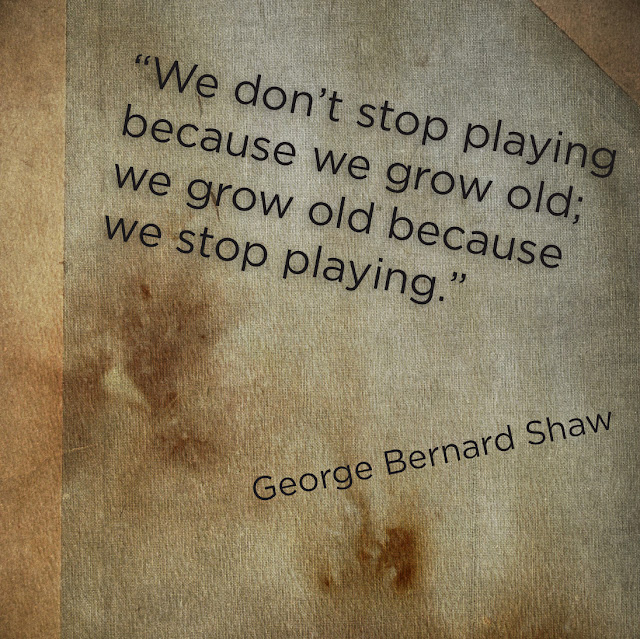
Children
learn through play. Adults do, too. But our society says we are
not supposed to. So hang out with kids and pretend to
supervise..
Adults
play too . Play will help you not just see outside the box--
but live outside it, No, it doesn't stop when you reach 60. If
anything, it can get a lot better. Never, ever --
"Act your age". Human beings evolved for life
long play.
This is your nature.
If
you are retired -- unleash your inner artist. Creativity is
play. TIf the Neanderthals did it - you can too. Art, including
visual arts, music, dance and sculpture. And also
philosophy, politics, and -- of course -- religion -- all
play.
Play
bonds us to others, keeps our minds alive when we are older and even
serves our spiritual life.
Which
is why you are never too old to rock ‘n roll. Keeping in mind that
rock 'n rollers play together, but with different instruments, taking
a melody and often riffing it.

Play
Long, Live Long
Did
you ever wonder why novelists and poets tend to die young but
satirists and comic writers, musicians and painters live longer?
Novelists
and poets are self-absorbed, trapped by conflicts and trauma, always
seeking to resolve those issues through writing. This the
result of isolation. For them, writing is not play -- it is
deadly serious -- with the emphasis on "deadly".
Hemingway
killed himself. Fitzgerald drank himself to death as did Wolfe.
They all died isolaged.
Picasso
by contrast was famously promiscuous and promiscuously social
He did not marry until he as 79 and is said to have had hundreds of
lovers. He was never alone. He also did not take his work that
seriously.
Artists
do their best work when they were part of artistic groups and working
with others -- or when they have an active social life. We are
social animals. Eusocial
animals, like bees or ants. What we create, we do with a lot of
help from others. .
Think
again of the Zimmers.
Think
also of the 100 year old swimming instructor who teaches kids to swim
in Berlin. What he does is mental as well as physical and
social -- play.
Similarly,
what Stephen Hawkings does, locked in his body but warping to
other dimensions in his mind is play with the cosmos and constantly
painfully communicating to others.
.
Born
in a Box: Blindspots

As
children, you learn to see things as your parents, friends, and
older siblings tell you they are -- not as they really are. The goal
is to fit you into a box designed for a huge, mechanistic,
institutional society -- not for you. And it is never a precise fit.
Never really comfortable.
As
I have said before, and will repeat -- when you get older, your
consumerist society dumps you from that box. Old stuff -- throw it
out. It smells bad. Everything is tagged with an expiry date
even though as the inspirational Charles Eugster worte "Age
is just as Number".
This
sudden obsolescence -- this abandonment by society -- might be
traumatic for some. Values and beliefs that seemed to
work before -- are now irrelevant -- therefore they are
irrelevant. You were once "useful". Now they give you
a pension you can't live on (unless you are a politician).
That
leaves two choices: denial --or double down and die.
Otherwise: rock 'n roll and live
Choice
#1 accounts for the "conservatism" that many attribute to
the old. Live in the past.
Rock
'n Roll is more future oriented. It contributes to the
"progressivism" that we see in many of today's leading
minds At the time of this writing, Noam Chomsky is 88.
Ralph Nader is 83. Slavoj Zizek is a kid are 68. Mick
Jaggers of the Mind.

Of
course, Donald
Trump
is 71. He's a conservative, sort of. But he is also just
playing. Many do not like his particular game because
Presidents are supposed to be sober, serious, father-figures - not
fat guys with orange hair who leer at pretty girls.
So
check your
blindspots. Look in the rearview mirror And. check the gauges
on your brain...
Use
it or lose it.

If
you don't use your mind -- you lose it.
Some
people don't play. Or, worse, end up playing solitaire,
which is boring disconnected from the Hive. Real play needs
other people. Or brains evolved as social organs, not for
solipsistic abstraction.
Fortunately,
with the shift to Information Societies, you have a lot more
resources, both in terms of human dialog and information itself. And
it is ever so much easier to find people to communicate with. .
Of
course, you have to learn to use digital media properly
--
as it progresses.
And
with so much information you have to question everything, read and
study. You have to be wary of using digital media to confirm your own
biases and beliefs and denials.
That's
where play comes in. Because play assumes a challenge, an
opponent -- opposition -- and so you have to learn new tricks. You
can't win if you stick to the same old strategies.

The
Things Your Teachers Never Taught You
Educational
systems are inherently dualistic. You are an individual , with
your own seat and desk, and you must compete with every other. You
win, they lose. Someone else wins, you lose. Yet, you must
conform to the "Norm". The desks are in straight
lines, or nicely arranged in symmetric semi-circles. EQ means
learning to cooperate with others for group goals although there is
always a hidden agenda -- a group must have a Leader. This is
the Either /Or school of thought or maybe Either And Or.
This
trope extends to definitions of "mind" and "thought".
If
you went to college, especially an MBA school or School of
Education, you probably learned there were two kinds of
thinking....

Ours
is a binary
culture.
But ...human
thought is not subjective or objective -- it is both at the
same time -- holistic
-- it functions on the quantum
level
-- not some combination of 1's and 0's but 1, 0 and a infinite number
of intermediate points Not three dimensions but an
infinite number of dimensions..
In
reality nobody ever
thinks completely "critically" or completely "creatively".
Our brains just don't work like machines, with On/Off switches for
different cognitive modes.
If
you look at the diagram above, what matters is in the middle.
The two circles are not really discrete geometric figures but
extensions of each other. Critical thinking and creative
thinking are co-extensive
Rock
and rollers get together and riff. They do not usually write
scores. They work as a group, developing melodies, trying them
out, arguing --with no distinction between "critical" and
"creative".
Thinking
is like music. And you need others to do it. You need a band..
The
Einstein Example
Einstein
was a genius. Another Old Guy. Like Edison,he actually had a rather
modest IQ, as geniuses go-- maybe 160. Einstein was
imaginative and he played the violin.. He liked pretty girls.
He hated arithmetic. For him, every day was a bad hair day.
At
28, Einstein was a patent clerk, a stultifying job he hated and that
required most of the functions listed above as "critical
thinking". Analysis. Convergent, linear logic, Judgment.
Rule-based logic, etc. etc.
Einstein
was bored and he daydreamed endlessly about time and space -- and
pretty girls. There were a lot of questions. But he came
up with solution or solutions to all these things, including the
girls. How? Here is one account.
Einstein
later illustrated this point with another thought experiment. Imagine
that you once again have an observer standing on a railway embankment
as a train goes roaring by. But this time, each end of the train is
struck by a bolt of lightning just as the train’s midpoint is
passing. Because the lightning strikes are the same distance from the
observer, their light reaches his eye at the same instant. So he
correctly says that they happened simultaneously.
Meanwhile,
another observer on the train is sitting at its exact midpoint. From
her perspective, the light from the two strikes also has to travel
equal distances, and she will likewise measure the speed of light to
be the same in either direction. But because the train is moving, the
light coming from the lightning in the rear has to travel farther to
catch up, so it reaches her a few instants later than the light
coming from the front. Since the light pulses arrived at different
times, she can only conclude the strikes were not simultaneous—that
the one in front actually happened first.In
short, Einstein realized, simultaneity is what’s relative. Once you
accept that, all the strange effects we now associate with relativity
are a matter
of simple algebra.Other
people say that Einstein was simply sitting on a tram on the way to
work and looked outside noticing that world was moving, not the train
-- and that pretty girl was receding into nothingness.
Relativity. Einstein's genius was intuitive.
Intuition is both critical and creative
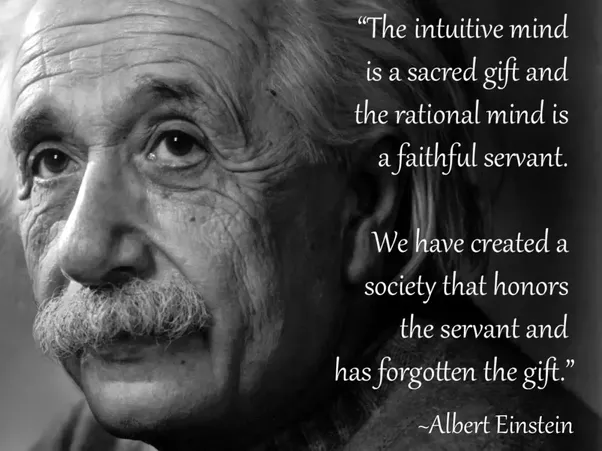
Open-ness
to the possible and intuition -- as well as simple reason --
gave him an original thought. He was thinking intuitively
outside the box -- holistically.
But
he did not do this in isolation.
Without
his friends, Heinrich Zangger and Michele
Angelo Besso, not to mention his two wives, we might have never
gotten the theory of relativity.
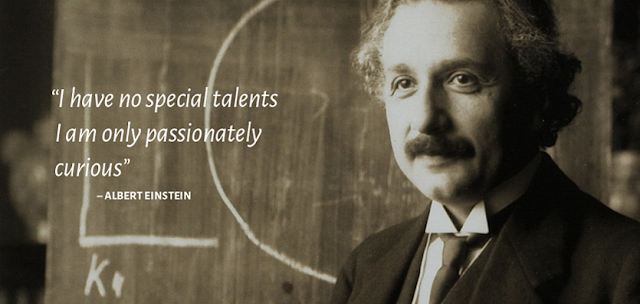
Age
and Mind
Oh,
you say: "I am not that smart" and "the
brain ages"
and “I forget things”.
Einstein wasn't that smart either. His brain aged, too. And he
was the archetype of absent-minded genius.
The
brain is remarkably plastic and as one function declines,
another may come to the fore as compensation. Remember (pun)
your brain is a like a house. As time goes on, junk
accumulates. Do you "forget" things --or just
misplace them with all that old stuff? In any case, you periodically
clean out the attic, dumping stuff that you -- and everybody else --
once thought relevant.
As
you get older, your attic can be pretty clean. You concentrate
on what you can actually see.
The
philosopher Merleau Ponty wrote:
Seeing
means immediate perception, intuition, and getting the gist of things
fast.
So
forgetting stuff has its advantages.
Lessons
from ADD

The
another thing the Young Old worry about is"attentionality."
"WTF
is Gramps talking about" says Young Johnny who is just thinking
about his girl friend's tits. Young Johnny's attention is
focused. Gramps is thinking of several things at the same time.
Johnny's girlfriend's tits, his first girlfriend's tits, mountains
with snowy tops, an chocolate parfait with a cherry on top,
and...and...
Gramps
is showing characteristics curiously similar to those shown by
people labeled as having “ADD” – namely Attention Deficit
Disorder -- defined by distractibility, lack of attention,
forgetfulness, and occasionally hyperfocus – apparent obsession
with one thing. It has two characteristics -- a high degree of
association, often random -- and a high sensitivity to raw perception
-- "Low Latent Inhibition".
Most
people learn in mid childhood to focus their attention, filtering out
random association and organizing perception. In the
latter case, you see what you are supposed to see -- something that
stage magicians use to advantage in creating illusions.
ADD
or ADHD is supposed to be a young person's disorder, mostly
because this set of presets for focus and filtering are not natural
but socially "recieved". Some people are more docile
than others and more suggestible. The Presets are tied to other
presets to do with group interaction, roles and workd.
Older
people are freer. So... they easily revert to a more natural
state.
ADHD
and ADD are just catchphrases, a convenient conceptual
bucket in which you can throw a lot of things -- that didn't
even exist until drug companies realized that they could diagnose a
third of the kids in the country who swing their legs under the
school desk and make zillions of dollars selling them stimulant
drugs.
Children were not designed to sit in rows listening to a teacher
drone on about trig'. The teacher says "pay attention".
If you don't -- well, ADHD.
Pop a pill.
For
older people, this "ADD" is really
multi-attentionality -- a spinoff of cleaning the attic
upstairs of conceptual junk. You don't have to "toe the
line" so much anymore. You get to use imagination. You don't
have to "pay attention". You don't have to pay
attention to what Mommy and Daddy think--because they're dead.

So,
if you are worried distractibiliy, forgetfulness, mention
-- forget
it. Forgetfulness
is also not a disability.
You
now have the freedom to live imaginatively. Inevitably you are
out of sync with some people -- but marching to the same drums
as others.
What
Evolution has to say
For
Hunters and Gathers, particularly nomadic peoples, some form of
multi-attentionality -- was an evolutionary advantage because
they had a dynamic relationship with their environment.
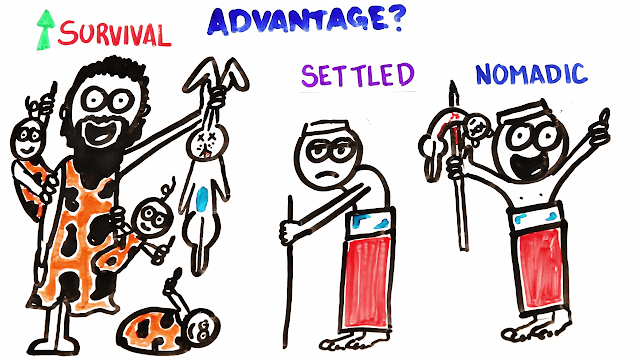
If
they focused on just one thing, they would ignore the signs and end
up as a yummy human burger for a Tiger.
Multi-attentionalitiy
means always checking for blindspots and hungry tigers, as well as
(in Einstein's case) pretty girls.
Before
many people retire, they sit at a desk all day, looking at
Excel charts of inventory, shutting down whole chunks of brain
and screening out all extraneous input. This is situational
lobotomy.
After
the company dumps you -- your brain will recover -- gradually.
Some people feel immense freedom, start painting or writing or
group sex. Others, of course, feel anxiety and pop
antidepressants putting the mind on Dolby. For them, it's a
kind of PTSD.
You
cannot fight evolution. We are born a certain way.
Societies try to modify us. But evolution will always win.
And we will return to where we began.
How
the Brain Works
Your
brain is a dark room.
You
can use a penlight to illuminate objects one by one – or you can
flick a light switch which turns on dim lighting so you see things
all a once – more or less. Now, since you can not see anyone
thing as clearly as with a penlight – you have to investigate.
And you may use more than just one sense to do that and move
around.
Older
people free from the routine of work and the necessity of
accomodating kids, can turn on the lights AND use the
penlight, .
Of
course, it's distracting. Of course, you forget things.
But
this means creativity.
Proof?
People in their 60s and beyond create more entrepreneurial startups
than people in their 20s-- they just don't need to think with
blinders on, in a linear or "vertical" direction as
directed by Microsoft software.
But,
as I said, the secret is play. All play is multi-attentional.
Without a measure of that " thing, no soccer player would
ever make it to the World Cup
Just
keep in mind, that “civilization” is herding cats – --
at all
ages.
It
never really works. The unhappiest people are those in their
20s -- cats trying to be dogs. And middle aged people, cats in
cages.
You
get to be what you really are. And cats play at all ages.

The
Advantages of Gist
Play
is Jest. It's fun. Remember the two Bonobos (Pygmy Chimpanzees)
earlier. If they
can do it, you can, too.
Animals
don't analyze. But they get things intuitively. They also have
imagination. They get the gist
of things. Because "gist" is the organizing principal
for multiattentionality.
By
and large, older people get the “gist” of things faster than
younger people since they have they benefit of experience, which
means heuristics.
They
often know what’s going to be said before it’s said.
Younger people need PowerPoint and Spreadsheets.
Of
course, this ability --when it awakes -- can be disturbing.
Some of the Young Old react by just turning their Gist function to
"Off". Which means they are not Young Old anymore -- just
Old. Time to die.
For
those who want to live, substitute "over 60" for "Gister"
The Gist takes you "out of the box", simple as
that.
That
was Steve Job's secret -- Gist.
You’re
never too old to rock ‘n roll.
Suspension
of (Dis)Belief

The
Young Old have to clear out the attic, they are multi-attentional
land they have "gist".
As
a result they often question beliefs and assumptions that
younger generations take for granted.
A
good example is Jeremy Corbyn who was pooh-poohed as too old with
ideas that harked back 40 years Corbyn was a loser they said.
But right now Corbyn is a winner and his biggest supporters are young
or in their 30s. Why? Because Corbyn has cleared out his
attic -- and his solutions are simple, practical and commonsense --
not at all ideological or doctrinaire. Gist./
Corbyn
questions the assumptions that many took for granted -- including the
so-called "moderates" in his own party. Austerity was
one. The idea that Inequality was somehow good for society. The
idea that everything had to be privatized, except for drugs and
sex.
Every
mega- society needs illogical belief systems, which have
little foundation in reality. Like Topsy they should grow, sustained
by "Confirmation Bias" .
How
Media Change Things
An
example of how evolution wins out is Jeremy Corbyn, an old guy
who was first too "old" and now too "new".
Back
in the 60s and 70s, he would have been either ignored -- or, if he
gained a following, probably assassinated like JFK, MLK or
Malcom X. That is because all these people appealed to
something basic in us -- something that socialization could not
pervert.
Today,
the "new media" takes us back to our evolutionary roots and
that makes a difference.

Writing
made possible mass societies. Printing extended their power to
organize and regiment.
As
McLuhan said, "The medium is the message" . Writing
is linear, logical. Printing allows mass dissemination, storage and
control of information..
Digital
media, however, are non-linear, include sound and images --
immediate, diverse, uncontrolled and vast.
In
the case of Corbyn, 90% of the "Legacy" media reviled him.
The inherently fascism of the printed word was obvious, with
obfuscations and contradictions. One pundit could not outshout
hundreds of commentators. Editors might screen the comments but
they popped up in the social media.

Back
before the Internet, we just had newspapers and magazines and radio
and TV, which were mostly supported by advertising. We also had
things called "books".
Remember them?
They were made of paper and stored in "libraries" big
buildings where you read stuff and even copy it for free and without
getting arrested because in those days information was well
controlled and sanitized.
When
the US announced that Vietnamese vessels had attacked their assets in
the Gulf of Tonkin -- people accepted this as true. And it took
a long time for what really happened to come out. We now
know we were conned -- although we don't
get that information from institutional information
systems like schools.
If
the same thing happened today, however, we would know right away, or
at least faster -- everything is somewhere on the
Internet!
Governments
and big companies don't like information in the wild. Any
large organization with a commercial interest has a stake in trying
to manipulated information -- to manipulate you. That includes
ISPs, Google, Twitter, Facebook and the like, which pretend to
tell you what's happening, even when it's not -- like Russiagate.
Point
CounterPoint
But,
as I have said, one of the characteristics of digital media is its
lack of controllability. Sure, Google skews its search results.
But you have other search engines to work with. And you can
just change your search terms to compensate.
Yes,
the Chinese have their Great (Fire) Wall. Which is just another
challenge for hackers, almost everyone over the age of 12.

Trying
to control the digital media is wack-a- mole. And it inevitably draws
attention to Control and the Controllers, making it and them
political targets.
Donald
Trump became president largely because he attacked the mainstream
media. He was the first Twitter President -- a strokke of
genius.
Legacy
media are a suburb. Nice straight streets in grids with sign
posts, every house with a lawn and a number, no vegetable gardens out
front. The dgital media are a jungle.
Once
we were hunters and gatherers. The Information Age has returned
us to hunting and gathering -- information-- watchful for the tigers
hiding.
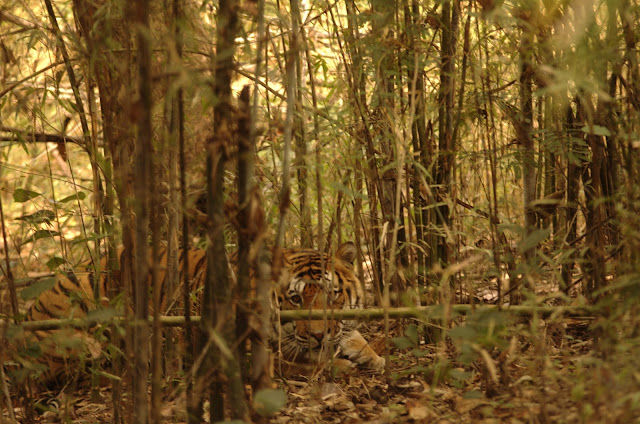
Don't
Get Eaten By the Internet
Truth,
Knowledge
and Belief
But
to avoid getting eaten?. As in all things you need some basic
skills. You stand up out of cubicle and scratch your head....
A
jungle or a maze? It is all about "belief" and
"disbelief". This is where it gets difficult.
For
starters, what is a belief? It is an assumption, a priori, from
which other ideas devolve. God exists. God created the world.
The world is crazy. God is crazy..... Or. God exists. God
created the world. The world is crazy. But God's ways are known
only to Him and if the world is crazy -- that's on us.
"Disbelief"
is when you decide not to believe something. You do this to enjoy
art. And also to expand science.
“Suspension
of disbelief”
– makes art fun.
Play,
remember? Our prehistoric ancestors learned to distinguish the
real (truth) and the unreal (belief) through play
which provided knowhow (knowledge) . But play is imagination --
not "real" . So you have to pretend it's real. Watch
kittens mock fight. They are pretending its "real"
preparing for the day when they really have to do it.

Critics
are paid to use "critical thinking", that is just one of
their testicles -- which is boring. Un-fun. Work.
Un-sexy.
These
people who usually are bald and have thick glasses and hair in their
nostrils, male or female, will quote you 30 or 40 different
kinds of biases – but they are always
wrong.
Suspension
of Disbelief which works in art when reading a SuperMan comic
--works just as well when hunting and gathering information -- just
in a different way. The comic requires you to accept silly
things like SuperMan's being able to fly faster than light. The
Internet has lots of silly ideas. Accept them -- first.
Then
dis-believe.
You
must apply both the artistic principle. Belief. And the
scientific principle . Disbelief. The truth is the clearing between
these two trees.
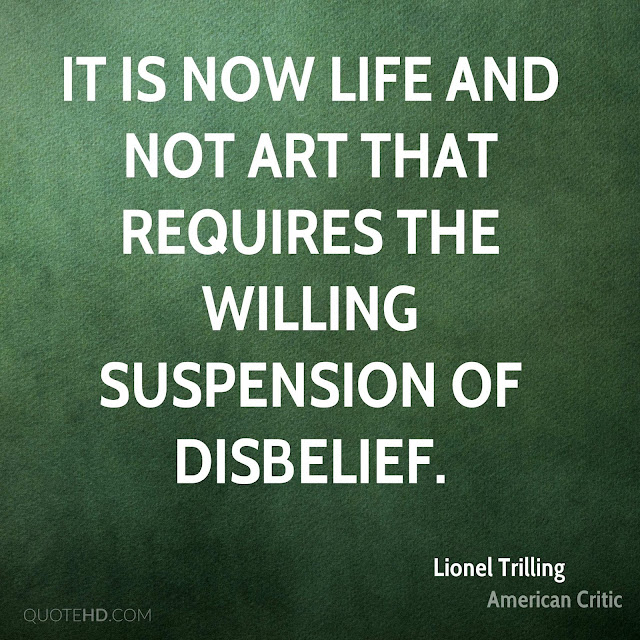
Confirmation
bias is bias that confirms what you believe -- or think you know. It
covers everything from gravity to the After Life. It makes it hard to
believe things contrary to a
priori
assumptions. So you need suspension of disbelief is essential to
freeing up your mind. Here are some assumptions.
-
When
a famous doctors says something … you may not understand what he
is saying, but you believe.
-
You
believe in God – because you grew up believing and your friends
and family did.
-
You
believe a newspaper like the New York Times because it’s a famous
newspaper and a lot of intelligent people write articles for it and
it's entertaining.
-
You
believe liberals (or conservatives) are destroying the country
because all your friends are liberals or conservatives or you work
in Wall Street or in a Union job.
-
You
believe socialism if you are poor and your friends are too. You
believe in capitalism because you have a trust fund and all your
friends do, too.
Beliefs
are usually heuristics copied from other people so we can conform
to handle specific situations -- and later generalized. Such
beliefs allow you handle things automatically, as hunter,
warrior, shoplifter, teacher, husband, father or whore. But the
assumptions are not usually.generalizable
You
can't trust authorities -- what they
believe. Newton was a great man but Einstein didn't believe him.
Hawkings doesn't completely believe Einstein.
Skepticism
rules.
So never,
ever
trust newspapers and TV networks. They are not in the business
of communicating facts -- they communicate opinions. For them facts
are entertainment.
On
the internet, you have to search carefully, use more than one search
engine -- and always read forums, group discussions and comments.
It is in dialog that truth resides.
Participatory Wellness
Let's
take a look at "authorities" -- doctors, for example. Most
people believe their doctors. But doctors make
mistakes and they kill a lot more people than terrorists.
A study by researchers
at Johns Hopkins Medicine says medical errors should rank as
the third
leading cause of death in the United States — and highlights how
shortcomings in tracking vital statistics may hinder research and
keep the problem out of the public eye. Don't worry about the
swarthy guy mumbling in Arabic, worry about your obstetrician.
The
authors, led by Johns Hopkins surgeon Dr. Martin Makary, call for
changes in death certificates to better tabulate fatal lapses in
care. In an open letter, they urge the Centers for Disease Control
and Prevention to immediately add medical errors to its annual list
reporting the top causes of death.
Based
on an analysis of prior research, the Johns Hopkins study estimates
that more than 250,000 Americans die each year from medical errors.
On the CDC's official list, that would rank just behind heart disease
and cancer, which each took about 600,000 lives in 2014, and in front
of respiratory disease, which caused about 150,000 deaths.
Medical
mistakes that can lead to death range from surgical
complications that go unrecognized to mix-ups with the doses or types
of medications patients receive.
But
no one knows the exact toll taken by medical errors. In significant
part, that's because the coding system used by CDC to record death
certificate data doesn't capture things like communication
breakdowns, diagnostic errors and poor judgment that cost lives, the
study says.
So,
once again you need to learn to use information technologies .
No, herbal supplements will NOT cure cancer! And you
should avoid fad diets and the like. If it's a fad it hasn't
been tested.
Suspend
disbelief. Suspend belief. Be objective.

No
one knows the exact toll taken by medical errors. In significant
part, that's because the coding system used by CDC to record death
certificate data doesn't capture things like communication
breakdowns, diagnostic errors and poor judgment that cost lives, the
study says.
So...you
have to keep on questioning and researching.
The
thing is that doctors do know more than you. And they are
mostly good people.
So
work with
your doctor(s). Notice I use the plural --because you should
always get second and third opinions in addition to your own
research. You must work with your doctors for participatory
wellness -- remembering that medicine is science -- and science
requires skepticism.
A
case in point. I tore all three ligaments in the shoulder
- the ligaments that hold the shoulder bone in place. When I raised
my arm the end of the bone would point up like I had an erection in
my shoulder. Not wanting to be arrested for sexual harassment
by having an indecent shoulder I consulted my local bone
doctor.
Now,
I do a lot of research on the internet as part of my job.
So
I checked. There are operations. Mostly with screws and wires
and stuff that sets off metal detectors. The success rates are
low -- about 50%. then I found a doctor at the University of
Connecticut who had a new operation using tendons from cadavers --
the whole operation on line.
Success
rate? Over 80%
Now,
I have a shoulder that looks just like the other except for the scar,
which I can lie about.
This
does not mean you should ignore your doctors and seek out a quack in
Mexico if you have cancer. I investigated carefully, Checked and
re-checked,, discovering that the doctor's science was really in the
mainstream and very solid indeed.
I
am not overweight and I don't eat a lot. In fact, I was eating
only about 1500 kcal a day.
A
little research showed that cholesterol sometimes spikes with low cal
diets - - for some people while dropping for others.
More
research suggested that off again, on again dieting -- as in
"intermittent fasting" can generate gall stones. What
are gall stones? Hardened lumps of cholesterol
So
I went to a doctor and an simple sonogram. Took a few minutes
and doctor said, "You have sludge in your gall bladder".
That 'sludge" is like a blocked drain and can turn into
stones. It can also produce, you guessed it -- chills,
hypertension, etc.
This
is what you call Participatory
Wellbeing.
Working with
doctors - not against
them - and not against commonsense.

Mental
Fitness involves dialog, discussion, and participation. It is a
group
sport.
Think
of education. What did you learn from lectures? Nothing
you couldn't get from a book. You learned from discussion, argument
and hands-on experiments.
Group
Think
"Group
think" is bad -- when it is conformist.
And it is good, when it is interactive and discursive. Socrates
taught through dialog -- by asking questions and then discussing the
answers. Those who fear others opinions ultimately learn
nothing. Thesis. Antithesis. Synthesis.
Human
beings are animals and different from other animals in just a few
aspects. But those few things are very important and have made
us among the dominant species today -- don't get too proud because we
share this position with the rat and cockroach, who are likely to
outlast us.
The
primary difference between us and our primate cousins is our evolved
social nature. All social animals "bond" with each
other. Some animals bond with individuals of other species.
Dogs, for example. But don't forget that dogs kill a lot of
people every year. While animal bonding reflects pack or group
behaviors, human bonding is of a different nature -- it
is collaborative and empathic, We have a special sense of
empathy from which our sense of "self" and the "self"
of another derives.
Granted,
we also have throwbacks -- psychopaths or sociopaths who have the
intelligence to understand emotions and even mimic them -- but no
empathy, and consequently no conscience.
No
other animal cares the way that homo sapiens does -- except
perhaps for dolphins.
There
are many theories as to why this is so. One is that we
domesticated ourselves as we did dogs and cats -so that in an
important sense we remain children until we die, with children's need
for mutual caring and play -- and the ability to excite familial
responses in others. As I said earlier, human beings
never lose their desire to play. Watch those old guys in the
park playing chess.
But
human intelligence is a social or eusocial. Our unique
abilities for language and abstraction -- the ability to structure
perceptions in the form of communicative symbols and "ideas"
was an adaptation to collaborate with others. Isolation
will not make you smarter, no matter how much you study -- it will
just drive you mad.
If
you want to live smarter talk to people, make friends -- collaborate
and cooperate. As you get older, you may feel weaker, more
dependent, less in control -- but in a group you are stronger.
Some
people turn to cults. But surrendering to a single point of view
makes you weaker, not stronger. Join groups where you
can get opposite points of view. If you are an anarchist, look
for dialog with conservatives. If you are religious, look for dialog
with the non-religious. Look for interactive communication that
"stresses" your mind just as lifting weights stresses your
muscle.
On-line,
join forums, post comments, discuss, argue ....learn.
Watch
a rock band. They often seem to be playing against each other as much
as with each other.
Is
rock 'n roll "primitive". Of course, but so are we
all.
Chapter III
Physical
Fitness
What
exactly is the "body"?
Stand
naked in front of a full length mirror and it feels so very personal.
This is not as others see you. Subjective impression is
truth.
Objective
impression is deception. And the body is very much a
social object and by choosing your clothes carefully, your makeup,
your hairdo -- you can be a little older or younger than you
are.
But
ultimately, you can only hide so much. Take care of the body itself.
You don't need to let it rust out like an old car. Treat it
like a classic car. Polish it. Do maintenance. Be vain.
Other
primates do not care how they look. But why devolve as
you get old..
As,
Charles Eugster who began bodybuilding at 85 says in his book "Age
Is Just A Number" vanity is our greatest asset.

Physical
fitness yields many benefits -- greater, health, longevity, energy --
but also social acceptance. Eugster, a widower, said he wanted to
turn the heads of cute 70 year olds. And he did.
Rock
'n Rollers all know the act is half the music -- they are
performers. Hence, the emphasis on appearance. The
costumes, the makeup, the whole act. Madonna was just a simple
Catholic girl made up.
Our
ancient ancestors didn't wear a lot of clothes, clothing being a
technology they did not possess.
What
they wore was for warmth or protection from the elements. But
they wore jewelry. The used body painting and tattoos.
They didn't jog or lift weights because their life styles were
active. But they performed. They danced and sang -- even
when old . As I have pointed out, there is a sense in
which we remain children all our lives. As we shall see later,
human beings are self-domesticated.
By
now you must be getting tired of my harping about evolultion.
So our ancestors did this or that? Nobody really knows, right.
And modern hunting and gathering peoples are all different, too.
Add to that the fact that evolution is a process which is
continuing to this day. Northern Europeans evolved to have
white skin from their former melanin heavy skin. Their guts
evolved to handle simple carbohydrates like sugar and alcohol.
Eskimos evolved for life in the Arctic. We have smaller
brains than our ancestors.
While
a toy poodle looks a lot different from a Pit Bull -- and even acts
differently -- it is still a dog.

There is a lot of disagreement among paleontologists about Early Man but the fossil record cannot be ignored.
The
average height of a European male 2000 years was about 5
feet 9 inches - the same as today. Some people say we were
healthier back then. What is more likely is that today we
succumb to lifestyle diseases or environmental diseases. For
early man, there would be parasitic infections and bacterial
infections from accidental wounds. Infant mortality was high -- as
was child mortality.

Today
it is cancer, diabetes, heart disease and other diseases related to
lifestyle and the environment. Smoking, alcohol, sugar, bad
air, lead in our water kill. As does social alienation --
loneliness.
At
least, our ancestors were never lonely. And even if they
practiced infanticide and euthanasia, they cared for each other
better -- if only because they had to.
Issues
Modern
human beings are brought up with complicated ideas about our bodies.
First of all, we are taught to hide not the whole body but
parts of it -- specifically the sexual organs-- yet to suggest
sexiness.
For
our ancestors, sex was yes or no. For us, it is a constant
maybe.
Since all men have basically the same equipment and so do all
women, if it were constnatly on display, there would be no play,
And, as I keep on saying, play is all.
We
are the Playful Ape.
We
are also Industrial Apes.
Modern
man tends to look a the parts of things, not the whole, like a
mechanic obsessed with carburetors and fuel pumps. In terms of health
we tend to think of specific organs, the heart or the liver or
the kidneys -- and only when disease strikes -- by which time it is
often too late to do anything. Our ancestors treated the body
as a whole.They had little knowledge of its internal
mechanisms, other than basic first aid -- so no blindspots as we have
today.
No
prehistoric man said, "Yeah, so I am a little overweight, maybe
20 pounds but I am cutting down on my smoking".
Evolution
If
an alien zoologist visited earth he would look at our skeletal
remains and maybe a few embalmed bodies and compare us with our
hairier cousins. The average human is bigger than a
chimpanzee-- but not nearly as strong, nor as dangerous.
Our
jaws are weaker as are our arms and hands. Our teeth are
smaller, with smaller canines. Our legs are longer for bipedal
locomotion which allows us to walk upright comfortably for longer
distances. We are clearly adapted for life on the ground rather than
in the trees. And our smaller, more flexible fingers and thumbs
allow us to "pick" and "gather" rather than
tear. As well as to fashion tools.
From
this an alien zoologist would assume that men are "designed"
to eat a wide range of things, probably including insects, grubs,
berries, nuts and seeds, as well as meat scavenged from other
animal's kills and with the use of tools and collaborative behavior,
larger animals. Of special significance is our ability to kill
at a distance.
Today
we think in terms of three meals. Breakfast, lunch and dinner.
Which fit 19 Century work pattersn.
Our
ancestors however, did not have bacon and eggs for breakfast.
They foraged constantly, eating constantly a little bit at a time
omnivores -- eating nuts, berries, fruits, bugs, and lots of
creepy crawly things.

The
invention of fire helped a lot. Cooking not only widened
the kind of foods we could eat but killed parasites.
The
use of slings, throwing sticks, and bows and arrows, made groups of
hunters a force to be reckoned with -- as did simple traps.
It
was the puny naked ape that wiped out the mega fauna of Old,
stampeding mammoths into pits with stakes or over
cliffs.
.jpg)
But
agricultural technology narrowed the range of foods we could eat to
staples, bread and rice. From eating 50 or more different kinds
of foods, we went to three or four. The average heights dropped
accordingly. Population density increased and, with it, communicable
diseases, simple organisms with the ability to mutate and evolve fast
into deadly forms. Syphilis, for example.
Sex
Male
humans have just slightly bigger penises relative to body size
than bonobos and chimpanzees -- and much more so than gorillas.
In addition, male humans like a penis bone which helps maintain a
longer erection. Modern technology has corrected that omission
with Viagra.
The
flaccid penis of the human male is bigger and more obvious than that
of his cousins with a prominent glans at the end, indicating a
display function.
Primatologists
disagree about what all this means. But the most likely
explanation is that early human beings were less competitive than,
say, chimpanzees and also egalitarian, not patriarchal like gorillas
and chimpanzees but not matriarchal like bonobos.
Most
human populations tend towards monogamy -- that is, pair bonding.
At the same time, human beings are highly promiscuous. In
other words, like bonobos we do not have sex just for reproduction
but for pleasure and play, with females calling the shots (as it
were).
The
boney, corrugated penis of the male chimpanzee is a an instrument of
rape and indeed females have low status in their societies. In
the case of bonobos, both males and females are bisexual and play at
sex.

Gorillas
are polygnous with a single male and a harem. Guess what?
A small penis relative to size and small testicles. No
competition.
So,
assume for the moment that human beings pair bond to raise children.
But this bonding has little to do with sex -- which is play.
Self
Domestication
Domestication
in dogs, cats, foxes and other animals results in juvenile
characteristics being maintained throughout childhood. Most
young animals are highly tractable. But they change as
adults.
So
dogs and wolves are the same species. But wolves develop longer more
powerful jaws and canines, and a highly advanced social structure
with male and female alphas, who alone can breed

Dogs
by contrast enjoy puppy like characteristics life long. Shorter
snouts, less powerful jaws except in breeds bred for fighting.
They are still pack animals but the distinctions between alphas and
betas and omegas is not clear cut. And any dog in a pack
can breed.
 Human
beings have smaller less powerful jaws than other primates and are
egalitarian -- like puppies. They play life long and they
seek comfort just like any young animal from
others.
Human
beings have smaller less powerful jaws than other primates and are
egalitarian -- like puppies. They play life long and they
seek comfort just like any young animal from
others.
Pllllllllllllleeease,
give me a hug!
After
my father died, my 75 year old mother confided something to me.
Now this is the woman who insisted I should never have sex after
marriage and only to have children. She said, "You
know what I miss most?"
"No,
what?" I replied
"The
sex. Your dad had these little blue pills and boy were they
good".
.
Sex
is a form of low impact exercise for the elderly. It
promotes good circulation. And each orgasm generates new brain
cells. When we talk about physical fitness -- this is the first
thing. Which also overlaps with mental and social
fitness.
And
how do you find partners? The same way you always did. Of
course, you can do online dating. But the basic thing will
always be talking to someone and seeing if there is a spark.
And if you can't find a partner, keep sexually fit anyway. A
woman's best friend is her vibrator. A man's best friend is
porn.
You're
never too old to rock n roll.
Food
We
evolved as omnivores. This was our biggest advantage over more
specialized species. A tiger will die on a diet of bread.
Deer don't eat meat. But human beings eat everything.
This
allows populations to adapt quickly when food resources are
limited -- allowing human beings to spread all over the globe,
adapting to the harshest of environments.
Eskimos,
for example, did not eat vegetables until recently. Similarly,
until recently, native Americans did not drink beer or alcohol or
refined carbohydrates of any kind. In the middle ages, people
lived mostly on bread. When Eskimos and Native Americans
switched to European diets they suddenly developed a host of problems
they had not had before -- diabetes, heart disease, various cancers,
liver and kidney diseases.
In
a natural state, with optimum resources-- we ate fruits,
berries, various tubers, nuts, seeds, and grains, eggs, insects,
fish, animals of all kinds and sizes. We ate
continually -- -when we were hungry. We were grazers. If
someone killed a large animal like a deer or antelope -- then it was
family dinner time -- "family" consisting of everyone
in the tribal group. But this did not happen all the time.

Today,
we have huge choice. But a lot of our food is processed with
refined carbohydrates and fats. We get too much salt, too
little potassium. While we are adapted to cannabis with
canniboid receptors-- we have chosen alcohol as our social drug.
It
is just too easy. Much of America is obese -- and at the
same time nutritionally deficient. The "Great American
Diet" is a deathtrap.
So,
every now and again we go on diets. We lose weight -- and gain
it back. And then do it all over again. Not good for the
gall bladder, which is designed for a "grazing" diet
including lots of juicy, fatty grubs and insects.
You
don't know what's in your food, do you?
If
the idea of eating insects disgusts you, you might be surprised to
find out that you already regularly
eat them.
If you check out the FDA’s
Defect Levels Handbook,
you can see just how many buggies you could be eating on an everyday
basis. Take beer for example—the acceptable limit of insect
infestation in hops is 2,500 aphids per 10 grams. Canned fruit juices
are allowed up to 1 maggot per 250 ml, curry powder is allowed up to
100 insect fragments (head, body, legs) per 25 grams and chopped
dates are allowed up to 10 whole dead insects. The list goes on and
on. Is this churning your stomach? It shouldn’t, because you’ve
been eating them for years and it hasn’t bothered you.
So
modern man is already
eating bug and insects. We just don't know it. Or rather
don't want to know -- most people don't like to look at their food
labels. Something the GMO people take advantage of. But
if you want to live longer, you have to do a little research.
Remember the chapter on Mental Fitness and Participatory
Wellness.
Research
will tell you -- more or less -- what you are putting in your mouth
-- and whether it is good for you. Again, you have to suspend
disbelief. Meal crubs, crickets, ants, termites -- all
good
for you. You also have to suspend "belief".
Cauliflower is great. Helps beat cancer, etc., etc. But, as in
all things there is a caveat. It is is goitrogenic, which means
you need iodine such as you get in sea weed to balance it.
Sauerkraut is not only nutritious, it contains more intestinal
flora than yogurt -- but also a huge amount of salt, meaning you need
to balance it with potassium fruits such as bananas or with white
beans.
Wild
meats have lots of protein and little fat. But in the case
of deer, there is that little matter mad cow disease, which has
spread to deer, largely as a result of the killing of predators such
as wolves.
It
goes on and on.
Diets
Fad
diets appear regularly. Recently we have intermittent
fasting and the Paleo Diet.
The
problem with any "diet" is that it usually a short term
solution not a lifestyle change. Never diet to lose weight
quickly. Diets only work as "diet" meaning a
lifestyle change.
Paleo

Let's
look at the Paleo Diet. The Paleo diet is pretty good in
principle since it eschews processed foods. However, it assumes
that we know what Paleo people ate. And, in fact, we do.
They ate anything they could get -- depending on the environment
--occasionally even each other. In terms of protein -- they got
most of it from insects, small animals such as squirrels
and rodents, and larger animals. But this meat was all
wild meat. Paleo people used fire to cook, making the
indigestible digestible.
Now,
the Paleo people tell you not to eat beans because they say we didn't
eat beans in the Paleo period. It is true that beans have
to be soaked in water and then cooked or fermented to eat -
quite within the capabilities of hunters and gatherers. You are
not supposed to eat potatoes because they were a product of the
neolithic period. Nor tomatoes weren't around in the Paleo
period. Grains, rice and dairy are all out.
This
assumes that we are today as we were in the Paleo period -- that we
have not evolved, which is clearly not the case. While some
people remain "paleo" in the sense of being either lactose
intolerant or gluten intolerant, a lot of people can handle these
foods.
In
addition, the Paleo people allow grass fed beef, chickens, and
chicken eggs. Sorry, the Paleo people didn't have cows or
chickens.
Add
to this that almost 90% of beef in the US are grass-fed up to a
couple of months before slaughter. Beef that are entirely
grass-fed are not really any more natural" than farmed beef fed
cut grass. Only free range beef allowed to forage a variety of
grasses are actually "natural" -- but these are rare.
So, chances are that your grass-fed sirloin is not really "natural"
at all and still contains unhealthy antibiotics, steroids, and
...oh... yes, pesticides.
In
other words, you cannot go Paleo without living
Paleo -- which restricts you to a few places in the jungles of South
America.
That
said, the Paleo diet has some good things such as restricting refined
foods, sugar, and high fat dairy. Ordinary bread has excessive
amounts of sugar and salt, for example.
Intermittent
Fasting

Fasting
is based on the idea that the human body needs to clean itself by
allowing the digestive system to do nothing.
Attached
to this is the notion that it is not natural for us to eat three
meals a day -- and that in the Paleo period, there were
times when food was scarce. Yes, people starved. There
were times of feast. And times of famine.
But
fasting puts a lot of stress on the body. The liver burns body
fat for energy and the by products end up in the gall bladder as a
nasty sludge, which can form stones. You need dietary fats to
flush the gall bladder and biliary ducts. Studies show that you
lose weight faster eating 5 or more small meals than one or two, of
equivalent total caloric value.
Yes,
you will lose weight. And feel lighter and maybe have more
energy for a few days. But really, as a grazer, you were
not designed for this. You were designed to eat continually
throughout the day. No
Paleo person every dieted.
Maybe
that
is the lesson. Our ancestors never dieted. Neither should
you.
Overeating is not good. Eating crappy food is not good.
Don't diet. But don't overeat. And watch what you eat.
One
issue, as you can see from the photo, is that Intermittent Fasting
appeals to people who prefer to eat crap like Cheeseburgers and soda
-- and then feel the need to punish themselves.
The
Mediterraean Diet
The
Mediterranean diet is pretty good. Yes, there's lots of
olive oil. But also lots of veggies of different kinds.

Think
the traditional greek salad.
And
you get pasta or bread.
The
diet gurus will tell you don't have to count calories -- but there
are lots of fat people in Italy too. DO count the calories, if
you are going to use bread or pasta. And try to use whole wheat
varieties.
The
magic here is olive oil. The oil is very filling and it reduces
appetite.
No
"diet" is perfect. They all work-- sorta - in
moderation.
Lifestyle
Lessons
What
do we know about diet in general?
-
We
are evolved, as adaptive omnivores, to eat about 40 to 50 different
kinds of food a week, including insects (an important source of
silica and protein)
-
We
are evolved to eat, as gracers, continually in small amounts
throughout the day.
-
Some
of us are micro-evolved to handle foods like dairy and gluten; some
are not.
-
We
are not evolved to handle sugars or alcohol
-
We
mostly cooked our food, except for nuts, seeds, fruit, berries and
the like.
-
Some
foods need to be balanced by others like cauliflower and seeweeds
-
Most
processed foods are calorie dense, nutrient deficient and packed
with stuff that's bad for you.
Eating
Smart
Our
ancestors ate what they could get. It all depended on the
environment. Those environments no longer exist. They have been
replaced by different environments. However, you are
still a forager.
You
can learn something from "Freegans". Freegans are
people who live on unprocessed food thrown out by supermarkets.
It is partly a political philosophy, anarcho-primitivist.
By and large, freegans eat a lot of vegetables, berries and fruits
rather than processed foods which have long shelf lives due to
preservatives.
Is
it healthy?
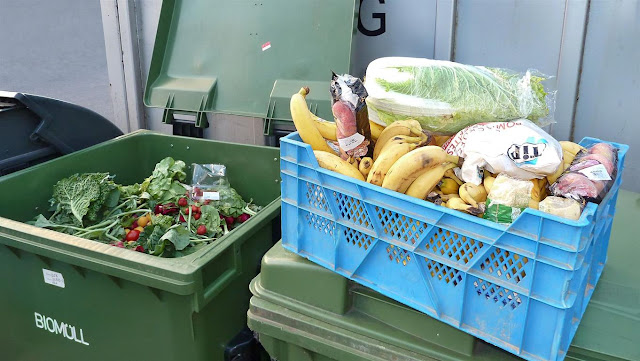
Meat,
daily, fish, and eggs carry serious risks whether purchased in a
store or recovered outside of it. These items require special care in
all weather and should be properly handled and cooked thoroughly.
Dumpster diving plant-based items that have been discarded by stores
is probably safer than a buying animal products from the shelf and
bringing them home. However, someone who salvages discarded meat
items in cold weather and handles and cooks them appropriately may be
no worse off than a meat buyer.
An
intelligent "freegan" might be healthier, if they are
careful about choosing dumpsters and eschew old pizza and ice cream.
Of course, many freegans are just homeless people or poor
people. Still, the best dumpster food is still vegetarian.
Wash it, soak it, an put in a stew.
Eating
healthy can be expensive. And it is requires a bit more effort
whether you buy the food or steal it or find it.
Rules:
-
Try
to eat 40 different foods a week
-
Make
sure that these food are of different colors, yellow, red, green,
black -- and so on.
-
Avoid
processed foods of all kinds.
-
Avoid
GMO, if you can.
-
Add
Whey Protein concentrate to your diet for protein.
-
Count
your calories and watch your weight.
-
Eat
nut and seeds, a little at a time as snacks.
-
Use
spices such as red pepper, ginger and tumeric
-
Cook
for yourself
-
Avoid
alcohol, and sugar.
-
Use
healthy oils such as olive oil
Why
40 different foods?
Simply
put: balance.
You need a balance of nutrients and food types for your digestive
system.
Why
different colors?
Vegetables,
fruits and berries have different pigments, meaning different kinds
of antioxidants and other substances. Keep in mind that
most anti-oxidants are also oxidants -- so you need a range, for
optimum nutrition and balance. Yes, you can buy programs that
will offer you analysis of foods. Unless you are a
nutritionist, they are pretty much useless. Just getting all
the different colors gives you appropriate balanced.
Avoid
processed foods
Not
all processed food are bad. Just don't eat them all the time.
Save it for special reward sessions.The main thing is again the lack
of balance. Low nutrition, high calories -- and also
convenience. The convenience is seductive. The longer the
shelf life -- the less healthy. And, of course, there is all that
salt and sugar and fat that we crave.
Avoid
GMOs
There
are lots of reasons to avoid GMOs-- both political and
environmental. The real
reason is that not enough is known about their effects. GMO's
should really be in the same category as processed food. They
are artificial. And nobody really knows what effects they
have. Eating GMOs is roughly as dangerous as freeganism.
Whey
Protein Concentrate
Whey
protein offers the most balanced range of amino acids and in its
cheaper, less refined from -- concentrate -- a range of
immunoglobulins which are good for the immune system. Plain,
unflavored whey protein can be added to granola or pancakes or
other foods to boost protein content. Add raw chocolate, with a
dash of Stevia sweetener (more on artificial sweeteners later), or
berries -- and blend for a delicious shake. The good thing
about concentrate is that you can buy it in bulk -- say 25 pounds at
a time.
Counting
Calories

The
purpose of counting calories is not dieting -- just avoiding
overeating.
Most
people lie to themselves. So, if I think I am eating 2000 kcal
a day -- I am actually eating 2500 kcal, If I think I am
burning 800 kcal from exercise, it's probably more like 300.
There
are lots of smartphone apps. Get a simple one that allows you
input your calories. And use it as an external or objective monitor.
But remember it is the kind
of food you eat as much as its caloric value.
Snacking
The
use of the calorie counter also allows snacking, essentially small
meals throughout the day. Nuts, for
example. Especially walnuts as
we will see from the next section
Oils
and fats

Oils
and fat have gotten a bad rep from food faddists. It's true
that oils have 9 kcal per gram compared to 4 for carbohydrates.
But you need oil to deliver fat soluble vitamins like Vitamin K and D
and E. And also to flush your gall bladder. "Healthy
oils" include monounsaturated oils like Olive oil or the oils
found in avocados Polyunsaturated fats are found in nuts and
vegetable products -- so, yes, walnuts are good for you. They
are associated with higher levels of "good" cholesterol and
a whole range of benefits.
One
tablespoon of olive oil is 119 calories. One slice of white
bread is anywhere from 80 kcal to 130 kcal, depending on who you
believe. But the bread is nutritionally "empty".
Go with the olive oil to stir fry things like okura and
tomatoes -- a low heat since it burns easily. A
handful of walnuts is 190 kcal. But, again, walnuts are
nutritionally dense. So while the calorie count looks high you are
getting benefits. Olive oil, as mentioned, tends to satiate appetite
quickly, which is a plus.
Most
people fail to calculate the calories in nuts and oils when cooking
-- which means under calculating calories by a considerable
amount.
An
easy way to get around this is to just add in 300 kcal for
"miscellaneous" to your daily caloric expenditures.
This keeps you honest. If you start gaining weight -- make that 500
kcal.
As
a rule of thumb, I would avoid gluten and dairy, with the exception
of yogurt. You may not show obvious signs of intolerance -- but
you don't really need them and they are nutritionally
incomplete.
At
the end of the day, eat what you want -- but keep the calories low.
As you get older, your metabolism slows -- so you really need
less.

In
this process, remember that some meals are social events.
Preparing food for others and sharing food does not mean binging --
but it brings people together.
Our
ancestors ate all the time -- they grazed -- but they collected and
shared the really good stuff.
What
do you need?
Protein
As
you get older you need more protein. But that doesn't mean
eating a lot of steak -- with all the extra fat and chemicals.
Protein is a mix of amino acids. The best protein -- meaning
the most balanced - is egg white protein. Then comes whey
protein. After that -- insect proteins.
You
need about one gram of protein per kilogram of body weight -- so if
you weigh 70 kilograms you need 70 grams of protein. One
scoop of whey protein concentrate is about 30 grams of protein.
You
can add fiber to this, such as psyllium fiber or bran to slow down
absorption.
Carbs
You
need carbs, of course. But bread, pasta and other glutens are a
problem for some people. Microevolution has adapted Europeans
to eating glutenous foods as well as digesting lactose. But
how complete that tolerance is is a moot point -- especially
as you age. Try to get your carbs from brown rice or
vegetables. The problem with refined carbohydrates is
that they act to spike glucose levels. Every person over 60
should regard themselves as partially diabetic since insulin
resistance changes as we get older. Eating just one or two
slices of bread increases your appetite -- even if it's whole
wheat.
Fermented
Foods
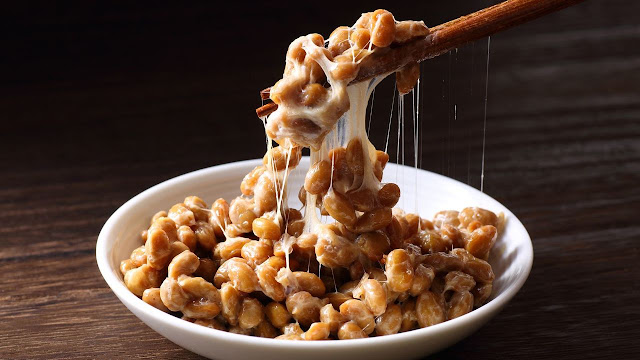
In
nature, we ate a lot of food over the "expiry date" as it
were. Meaning that the food was full of microbes, fermenting
naturally.
Sauerkraut
is fermented cabbage and contains more microbes than yogurt. It
is also -- unfortunately -- high in salt. So, if you eat it, you need
to raise your potassium levels with foods like bananas, white beans,
spinach and the like.
One
of the best fermented foods is natto
which contains an enzyme, nattokinase which is anti-inflammatory, and
heart friendly -- and often sold as a supplement. Combined
with brown rice, you also get complete protein. The beans have
half the amino acids you need, the rice has the rest.
Fiber
In
nature, we got a huge amount of fiber. Today, we need to
add fiber to food.
"Superfoods"

"Superfoods"
are just nutritionally dense foods. So blueberries are
superfoods because they contain lots of good antioxidants.
Ditto: cranberries and other berries. Raw cacao -- aka
"chocolate" -- has minimal fat and lots of antixoidants,
too. "Superfoods" are bascially the opposite of
processed, packaged foods. Squirrel meat is probably a
superfood. In other words, the term "superfood"
is just a marketing gimmick. There is crap food and there is
real food. And mostly we eat crap food.
Exercise the Easy Way
Lazy
and Crazy
Creative
people – the kind who learned to use fire and invented the wheel
have two characteristics.
One:
Laziness.
Also known as doing things in the easiest, fastest, most
convenient, most efficient manner. Don’t work “hard” – work
“smart”. And get your priorities right.
Two.
"Craziness", w. It means doing things
that don’t appear logical, but are often intuitively correct.
Reason and logic all depend on certain assumptions -- which in
one era are "normal" and in another "crazy".
Be
lazy and crazy. Work smart and you are a genius.
Lazy
and crazy is not
what Mom wanted for you. It is not what your teachers wanted
for you. Most definitely not what your Boss wants for
you.
So
don't fight convention. Ignore it.
Once
upon a time ago, when I was working in a job, earning bundles of
money for less than half the work of anybody else – but actually
contributing twice as much – a manager approached me and said, “You
know what’s wrong with you – you just want to earn as much as you
can for as little work as possible”.
It
didn't matter to him that company was benefiting from my efficiency.
He saw "LAZY" in neon letters.
I
left that organization, which went rapidly downhill and no longer
exists.
As
you get older, it gets easier to see easier ways of doing things and
to dispense with normality. But you have to be careful not to
rub this "magic" in people's faces.
A
Personal Example
I
used to live in a very expensive four floor apartment in Tokyo.
It had parking which I did not use because…well…it’s Tokyo—the
world’s worst driving city. It also had an elevator—which I
always used.
In
any case, I decided to move and save some money. I found fourth
floor apartment on the top of a building on the top floor with
privacy, quiet, pretty good light and ventilation and small enough so
that everything was within reach – yet big enough for my needs.
I’m lazy, right. I just wanted to be able to reach out and
grab what I needed. I could also keep cats, which is hard to do in
Tokyo where I live since most landlords prohibit them although they
cause much less trouble than children or dogs. I’m social.
And cats are good friends. Just no elevator. So now I had to
climb at least four flights once or twice a day. Oh, and it was
a quarter the price.

Ok,
so I had to climb four flights a day.
The
apartment was also farther from the subway station.
I
had used a bicycle before. But if I wanted to use the subway I
would just walk there since the city government would take away
bicycles left near the station.

Now,
I eschewed subways altogether, and started using the bicycle.
I
discovered I could go anywhere in downtown Tokyo, in about 30, at the
most 40 minutes. Rain? If you wear a rain suit – it’s
actually drier than walking to the subway with an umbrella. I
discovered I could wear a Bluetooth headset and do a lot of my
phoning on the bicycle, which I could not do on the subway.
Again, I’m lazy.
Suddenly,
my fitness level rose. I lost weight. I felt good. I had added
exercise without trying, making it part of my lifestyle.
Health is all about creating beneficial exigencies, which are
integrated with your life – not ancillary to it.
Now,
a lot of people go to a health club and bicycle there. The
bicycling machine doesn’t go anywhere – and it is boring. You
can’t phone because health clubs won’t allow that. There
you are stuck between a fat balding guy and fat lady with warts and
they smell bad and pant a lot – and, no, they don’t want to
talk. At least, outside you have the option of stopping and
striking up a conversation with someone who looks interesting.

In
a fitness club you can listen to music – but it’s still a drag.
And, of course, you are paying for this -- and it takes time
out of your schedule. Cycling outside is getting from A to B --
adding time to your schedule.

In
Tokyo, most people think I am odd – crazy.
Bicycling everywhere. They also think it is odd that I dress
simply (have to –it’s a bicycle, remember) and look and act
young. Most people think I am 15 to 20 years younger than I
am.
My
friends who know my age often say, "Why don't you act your
age?". Because I am too young to die --
always.l
OK,
so you don’t live in an apartment. You live in the suburbs 15 miles
from your office. And you need a house for the wife and
kids.
But…
15 miles is about 45 minutes to an hour by bicycle. If you
travel by car, you will actually save time during rush hour which is
when everybody else is going to work and coming home.
Need to wear a shirt and tie? – put them in the carrier and change
in the washroom when you arrive. You are going to be
wonderfully fit. Very often you will find that that if
you don’t drive to work – you save a lot of money – and you can
actually live closer to work.
An
added bonus is stress relief.
Some
wonk has calculated that each mile you live from work steals $795 per
year from you in commuting costs. $795 per year will pay the interest
on $15,900 of house borrowed at a 5% interest
rate.
http://www.mrmoneymustache.com/2011/10/06/the-true-cost-of-commuting/
Too
old to ride a bike. Think about it again....That guy below is
102 years old and just set a world record.

OK
– you insist on living far, far away from the city in some
suburb. In that case, make sure you have a big, big lot where
you can grow vegetables. Get lots of dogs to walk. And do
a lot of chores. there are lots of ways to expend
energy.

If
it snows, well, shoveling snow is great exercise. And just walking to
the store takes more energy when the sidewalks are slippery. A
lot of older people break their hips on slippery sidewalks.
To
be healthy you need a lifestyle that matches your needs and forces
you to act and look younger.
You
need a lifestyle that prevents you from compartmentalizing health as
just one part of your life. Sorry – without health – you
are dead. You don’t have a life at all.
Fitness
Clubs
I
am a big fan of health clubs that offer things like Tai Chi, kick
boxing and yoga – as well as body building – oh – and massage
chairs and saunas.
But
most people, again, don’t get the best out of their clubs.
Too
much “cardio” is unnecessary and probably harmful.
Of
course, anything you do at a fitness club you can probably do at home
or outside -- more cheaply even if you invest a machine or two and
some weights.
The
real advantage of fitness clubs is social. A chance to make
friends. When you join a club, make a point of talking to
everybody.
Invite people out for coffee or dinner. Compare notes on
exercise. Join a few classes in things like stretching or yoga or tai
chi'. A fitness club is an opportunity for
community.
Jogging,
Walking, Cycling
Our
ancestors never jogged. After running on uneven ground was
dangerous. The chances of stepping on something really bad --
something poisoness went up. The rule was watch
where
you walk.
Cardio
really is something you should get naturally in your daily life.
If you are one of those people who think that stair climbers, jogging
machines or exercise bicycles will help you lose weight or live
longer – you are just ill-informed. Jogging machines are
certainly easier on the ankles, knees, hips and lower back than
running on pavement – but you only burn calories while you are
exercising and anything over 55 minutes is burning muscle not fat.
Resistance training will burn fat by raising metabolism for 24 to 48
hours afterwards.
As
I have said, we are not evolved to jog. We were designed
to walk.
.webp)
So,
walking really is the best exercise. Each time your foot hits
the pavement you shock the bone and strengthen it. And if you walk
briskly you are exercising your whole leg, which has some of the
body's largest muscles. In addition, you exercise heart and
lungs and lower abdomen.
Cycling
is very good, too. But our ancestors didn't have bicycles.
This is a good example, however, of how we can use technology
to our advantage to achieve evolutionary goals.
As
said, human beings were designed to be lazy -- with occasional
short bursts of energy.
Simply
put: the bicycle is one of the most efficient machines ever devised
and a superb form of transport. If you are in a hurry – late – as
I always am – you bicycle fast in two to three minute bursts trying
to match the lights. The heart races ahead to, say, 130, then
falls, then rises. You are using not only the large muscles of
the legs – but standing on your pedals, the arms, using your back
and shoulders. All very good.
Fast...slow....fast...slow...
So,
cycling is great for the heart, and can be high impact or low impact
depending on your energy level/ However, studies show
that avid cyclists -- the kind you see in spandex on racing bikes
with drop down handles -- suffer from osteoporosis. In
addition, a lot depends on the kind
of bicycle you use. Those trendy racing bikes with drop
down handles are the worst choice. More in the section on the
perfect bicycle.
Let's
go back to walking. Each time you step, there is impact
on the legs -- and the bones. This impact stimulates bone
health and thickness -- especially when walking on concrete.
Punching a punching bag does the same for your arms.
The
Perfect Bicycle
Bicycles are
cool. And racing style bikes look coolest. You have to
wear spandex, of course, and get one of those cool helmets. The
trouble is that these bicycles are designed for racing and long
distance riding on a very smooth, well-tended roads in good weather.

In
the city and the suburbs, they are just not practical.
For
starters, the tires are very thin to reduce rolling resistance and
make it easier to pedal. The drop down handles allow you to
lean forward and down reducing wind resistance which rises rapidly as
speed increases. The suspension lacks shocks to save weight and
often uses simple braking systems, rather than disks. The bike
is light and just very, very efficient.
Compared
to a mountain bike, it takes about twice as long to get your heart
rate up to 120 beats a minute.
You
balance with your legs on a seat that puts pressure on your vitals
"down there", allowing you to main that a seated position
even when climbing hills.

Now
compare that to a hybrid mountain bike. It is much heavier, has
tires much wider for grip and shocks in front, which are heavy.
It has disk brakes, heavy again. YOu sit more or less upright, so
wind resistance is higher. So you need a lot more effort to get
up to speed.
And
you just don't look as good wearing spandex.
However
the hybrid is the better choice.
First,
you get better exercise. It IS harder to pedal.
You
can swap out the seat to use a noseless saddle that takes the
pressure off the sensitive parts of your anatomy. That forces
you to balance more with your arms giving your upper body something
of a workout.
You
will find your self standing a lot on your pedals to get up to
speed.
The
front shocks and wider tires are safer, in the case of potholes and
the like and in wet weather. Ditto disk brakes.
An
all weather bicycle means you need a light weight rain suit that will
fit over your regular clothes.
You
may also consider a helmet that does not leak moisture through the
vents.

You
may add stirrup clips which allow you to use your upper leg.
They don't require the special shoes that racing bikes
require.
 Modify
the handle bars with multi position end bars that allow you to change
your hand position.
Modify
the handle bars with multi position end bars that allow you to change
your hand position.
Add
an handlebar adjuster to modify the height.
Riding
upright in the city means better vision.
And
in the city, a smart rider wears a mask. Your lungs work extra
hard and you tend to inhale a lot of dust, dirt and
chemicals.

Mountain
bikes come in a variety of wheel sizes, and frame sizes. So you can
choose easily depending on your build. Hybrids have large main
gears like racing bikes. Harder to pedal at speed, of course, but
great going down hills.
Put
a carrier on the back to stow a business jacket or other essentials
or carry packages and you can commute to work or shop.

Resistance
training.
10,000
years ago your muscles got a good work out, pulling, pushing, lifting
-- all the time. Nobody went to a gym to work out. You
will notice that some of the longest lived people live in farming
village where they have to remain active as long as they
live.
"Resistance
Training" aka "Bodybuilding" has a relatively short
history. It developed exponentially after WWII and especially
with the advent of steroid drugs. As a "sport"
it was more of a "performance art" -- more about looks than
health. You must keep this in mind because traditional body
building exercises still hark back Arnold's hey day -- drug
drenched muscle monsters who spent five hours a day in the gym ever
day.

Most
people still set up their muscle training in three to five sets of 10
-- then with one to two minutes’ rest between sets?
Boring. And time consuming. You can spend hours in
the gym doing this. And it's not very effective without steroids,
anyway.
If
you are younger, say 50 or 60. it would be so much easier if
you didn’t rest between sets focusing on fully exhausting one body
part at a time with just one or two sets, then moving to another
without any pauses – always moving. You heart beat would stay
high – you would get cardio along with the resistance training and
you would save time. You could listen to rock music on an MP3
and you get a rush. This is called HIT -- High Intensity
Training. And you can do a training session in under an hour,
with all the benefits of a traditional session that takes two or
three hours.
Research
indicates that resi You then need a couple of days to recover.
This was a favorite of the greatest bodybuilder of all time.
No, not Arnold – Dorian
Yates.
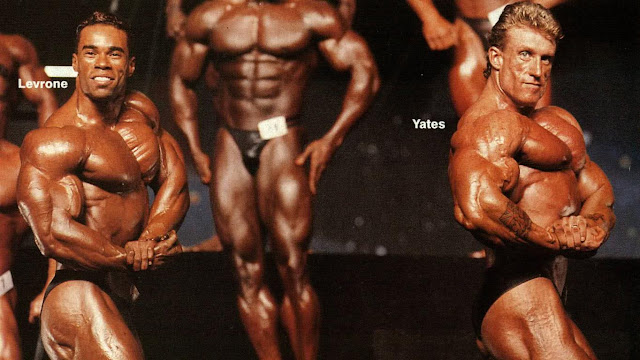
You
don’t want to look like the guys in the photo above. And you don’t’
want to ruin you heart with steroids. The point is that more
is not always better.
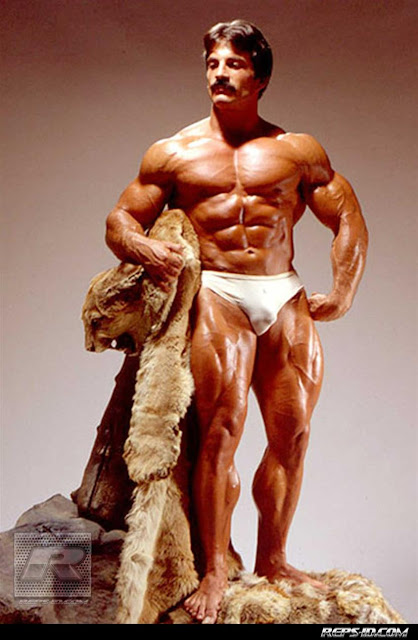
Mike
Mentzer, above, the popularizer of HIT traning -- before Dorian Yates
-- died in his forties. Steroids tend to be bad for the
heart.
Keep
in mind what you need msucles for. Steroidal muscles are like
fake tits -- purely cosmetic and kind of useless.
As
you get older, however, you do need the muscle to support your bones
and prevent breakages, also to reduce stress on the heart and
stimulate hormones.
There
are many variations of HIT training. Using the principles of
Mental Fitness, mentioned earlier, you have to research to find one
that fits you.
In
general, you warm up with a few light reps; then do a single heavy
rep, as much weight as you can move without straining -- in correct
form. In this case, machines are preferable to free weights.
They are safer, and you can reduce weight quickly.
Concentrate
on lowering the weight slowly. Then reduce the weight
immediately.With a lower weight you can do several reps. Once
the muscle is fully exhausted you need 3 to five minutes for your
heart and body to normalize.
More
on then to an exercise, which indirectly exercises the back.
Biceps, for example. You do the same thing. You use
the rest periods to walk around. Maybe do some abdominals
lightly or kick -- or just talk to people.
HIT,
while economical of time makes it easy to overtrain. One
way to prevent this is to break up training sessions with rest
intervals. You work a muscle to exhaustion. Then walk around
for 3 to 5 minutes, allowing your heart to normalize.
Then do the next muscle group.
Your
body needs rest. Dorian Yates would often rest a body part 10
days!
Keep
Charles Eugster in mind. He started body building at 85.
Then took up running. And died of congestive heart
failure, a common athlete's disease at 97.
Day
One.
Back.
Strait arm pull downs. Rowing. Two sets total


Biceps.
Curls.
Closed
grip pull downs. Two sets total.
Abdominal
crunches, stretching. Sloooow
kicking a la Bruce Lee.
Day
Two
Chest.
Flies. Bench press machine.
Shoulders.
Shoulder raises Overhead press.
Triceps.
Triceps press. Bench press machine or ovehead press.
Abdominal
crunches, stretching . Slow kicking.
Day
Three.
Legs.
There are various leg machines. And exercises. Try and do
two exercises right after another, which move the opposite sides of
the muscle.


Studies
show that muscles respond to multiple set workouts best if you allow
at least five
minutes for the muscle to recover. This is modified circuit
training. And, if you think about it, there are endless
variations.
There
are endless variations on HIT. But the basic rule is to perform an
exercise the isolates a specific muscle -- say biceps
curls first -- and then an exercise that works the sam muscle in
combination with others taking the targeted muscle beyond its limits,
such as close grip pulldowns which moves the biceps mostly with the
power of the back muscles. This is called "pre-exhaustion".
Descending sets also work.
You
will notice that I am not giving prescriptions here. It is
important for you to do your own research and create routines that
"feel" right for you.
There is no "right" or "wrong" here.
One way or another you will build muscle, feel better and get
rid of stress.
As
Jethro Tull says you are never too old to rock and roll.
Supplements
Do
they work? Good
question.
Again,
you have to research.
The
good news: with the internet there are a lot of sources of
information. The bad news: the information is usually
contradictory. In writing this book, I had to look again
at my own supplement consumption. After all, it is one thing to
pop pills – it is quite another to get other people doing the same
thing.
The
idea of "supplements" is that we eat crap food -- or have
lousy genetics -- so we compensate with "nutritional
insurance"
Not
drinking or smoking and keeping your stress levels down. Having
good friends and continuing to work or at least doing something you
enjoy is a lot better than any number of supplements.
One
thing for sure – just popping a multi-vitamin pill won’t do
anything – and depending on what’s in it may be harmful.
Keep
in mind that there sometimes taking too much of one thing depletes
reserves of another. Beta carotene, for example, is just one
over 500 carotenoids and supplementing it may just disrupt balance.
Taking too much Alpha E will deplete levels of other E vitamins, many
of which are absolutely essential. Too much zine depletes
copper – and vice versa. Supplementing with arginine depletes
lysine and may encourage herpes outbreaks.
And
then some things are synergistic. You need vitamin K to absorb
Vitamin D. And to absorb both you need healthy fats.
Tumeric
is great. Fights cancer and is good for the liver -- but absorbs
poorly -- without black pepper or maybe grapefruit juice.
So
you need to supplement intelligently. Do your homework!
That was the whole point of the chapter on mental fitness.
If you supplement, make it a hobby and research and enjoy the
research.
Ray
Kurzweil is 68.
He
looks a lot older than I do. He is also a lot smarter than I am
--on computer subjects anyway -- and much, much richer.
But he is also diabetic. A lot of other people would be
dead by how. He takes 250 supplements a day. And claims
to have slowed the ageing process. Then again he sells
this stuff. And he makes money from the lectures.
Kurzweil
has a point, however. Supplements might help somewhat – but
--according to him -- you need to take a lot . In the
end, one thing balances another. Antioxidants are big
these days -- but every antioxidant tends to generate
pro-oxidants. Kurzweil has been criticized by taking too much of
things he probably doesn't need -- like iron and calcium and the drug
lipitor which results in unnaturally low cholesterol levels.
In
nature, we had a diverse diet. We didn’t eat just one
kind of berry or one kind of nut – but many different kinds –
which gave us a huge range of oxidants and dietary fats.
Our problem today is a daily menu lacking variety.
Some
people will eat huge amounts of blue berries. But raspberries
have other nutrients that are good for you. And blackberries, too.
And strawberries. And...and... you get the idea.
Our
ancestors ate what they could find.
Have
you ever wondered why we have color vision? Duh…to
distinguish poisoness berries from the good ones, silly.
Go
natural!
Keep
in mind that most people over a hundred don't take supplemenets --
they mostly just have good genetics.
If
you juice, drink the fiber too. Removing the fiber gives you
pure fructose – which is not good for the pancreas.
Steve
Jobs famously died from pancreatic cancer. He was an advocate
of fruit juice diets – presumably without the fiber - and diets of
this kind --pure fructose -- have been linked to pancreatic
dysfunction. Even really smart guys make mistakes -- maybe
because they are so smart at one thing they think they know
everything.
Bodybuilding
forums are great sources of information – but also faddism.
So you have to read carefully. Bodybuilders stress their bodies
– so they eat to cope with this. And they research -- a lot.
Right now they tout carnosine supplements like pure carnosine and
beta alanine. Do they work? Read the literature for
yourself.
Herbs
'n Stuff
The
Chinese have been self-medicating with herbs for thousands of
years. But some herbs are dangerous, so once again you
have to study. Keep in mind that, in China, these
things are considered medicines to be taken when you are sick
– not necessarily to sustain health.
The
Liver
Silymarin
(Milk
Thistle Extract)
Artichoke
leaves
Kudzu
Ginger
Tumeric
Chanca
Piedra
Phosphatyl
Choline
Members
of the thistle family such as Milk Thistle and Artichoke are
good for liver function and detoxification, as is Kudzu. Check
out the NCBI studies. Ginger and tumeric have similar
properties, although tumeric is poorly absorbed and usually needs two
other supplements to absorb -- bioperine (black pepper extract) or
quercetin, a bioflavonoid found in various juices. All
have anti cancer benefits and combat inflammation.
Chanca
Piedra
helps dissolve stones. And phosphatidyl choline helps improve
cell motility, brain function and liver function. Some regard it as a
nootropic.
However, there is a
catch to all supplements. They may be good for the functioning
of certain organs but they don't necessarily cure anything.
It's like aspirin. A couple of aspirin a day reduces your
chance of colon cancer by more than 20 percent -- and pancreatic
cancer by more than 40 %. But if you have colon cancer or
pancreatic cancer, no amount of aspirin will cure it.
Schizandra
and
other adaptogens, Ginseng, Rhodiola and Ashwagandha
These
supplements promote physiological homeostasis and resistance to
stress. Some of them like Schizandra, which is reportedly good
for the liver have other functions. But they do not work
like tranquilizers. If you are under stress, you can't just pop
one and feel better. Like many herbal supplements, the benefits
are subtle and depend on long term use. Rats live longer on
rhodiola -- but that is with massive doses -- and rats and people are
a little different.
Berries
Cranberries,
blueberries, strawberries, goji berries, hawthorne berries and the
like. There is a huge list.
All
berries contain antioxidants. The color of the berry indicates
the kind of antioxidant. Cranberries, of course, are famous for
their usefulness in preventing urinary infections. Hawthorne
berries (and flowers) are good for the heart.
Black
cherry contains significant amounts of melatonin, an immune boosting
pro-hormone prohibited in some countries -- as a hormone. But
black cherry is allowed in all those countries despite containing as
much as a pill.
But
again, berries are not a cure -- just modest preventatives.
Add them to yogurt or to protein shakes but don't expect
miracles.
Mushroom,
mushrooms, mushrooms...
Cordyceps,
Chaga, Shitake, Maitake, Shimeji, etc.
Yes,
mushrooms are good for you and are associated with anticancer
effects. Cordyceps falls in to a special category since it
seems to have some effect on adrenal function. Here's
what NCBI says about mushrooms in general.
Medicinal
mushrooms represent a growing segment of today’s pharmaceutical
industry owing to the plethora of useful bioactive compounds. While
they have a long history of use across diverse cultures, they are
backed up by reasonable scientific investigation now. The mycologists
around the world, firmly believe that a greater knowledge of mushroom
can ameliorate many forms of cancers at various stages. Exploration
of unique species with medicinal properties from the untapped
wilderness is warranted. Conservation and cloning of therapeutic
mushrooms is needed for sustainable development
Most
mushrooms are full of all sorts of good stuff. Mix
up your mushrooms. since each variety has different chemistry.
Just make sure they are cooked well enough! Raw mushrooms are
not good for you.
You
will see Chaga is touted as good for almost everything probably
because it is rarer and more expensive.
http://www.globalhealingcenter.com/natural-health/chaga-mushroom-the-immune-boosting-superfood/
Teas
and Coffee
Tea
has lots of polyphenols. So does coffee. Drinking three
or more cups of coffee may be helpful in preventing diabetes
Gingko
Biloba
Said
to improve mental functioning.
Herbs
for the Prostate
Flower
Pollen Extract, Saw Palmetto, Pygeum extract, Beta Sistoerol,
Stinging Nettle
http://www.lovelycitizen.com/story/1977813.html
All
these substances seem to have some effects on the prostate which
grows in size as men get older.
BPH
is hard to treat. And conventional medicines are mostly
ineffective.
https://www.parsemusfoundation.org/projects/new-treatment-for-enlarged-prostate/
Again,
you have to take them before your prostate grows too large, too slow
the growth down. They are not cures.
Gh
Sulphur
Foods
These
are foods like garlic and onion. Smelly yes but good for you.
Except if you are allergic to them. You can also get sulphur in
the form of various supplements such as MSM and chrondoitin
sulfate.
Drugs
Our
primate cousins self-medicate. Yes, chimps get high.
In
Japan, marijuana is illegal – although cannabis oil is not.despite
Fortunately most of the plant's many medicinal uses seem to be in
CBD, not the THC compound that makes you high. Still, a
joint is much better alternative than a bottle of wine.
By
and large, the medical profession in the US and other countries over
medicates with psychotropic drugs such as sedatives, antidepressants,
and stimulants (such as Adderall for ADHD).
Many
hunting and gathering cultures use hallucinogenic mushrooms in their
religious and social rituals. They do not use such higher level
drugs for entertainment, as is the case in “civilization” or for
individual escape – but for a higher degree of social integration
and overall mental health.
Nowadays,
some scientists are finding that hallucinogens such as mushrooms, and
purely synthetic ones like LSD and MMDA are amazing useful in
handling all kinds of psychological problems where the experience is
controlled and structured – which is exactly what Indian cultures
have always done.
In
western cultures, we use alcohol mostly and nicotine to control
stress. Alcohol is a sugar and therefore not very good for you,
especially at the level where it feels good – that is, sorry to
say, always drunkenness – which means acetyl aldehydes are being
generated which are harmful to the liver – and carcinogenic.
By
contrast, marijuana is much better and actually anti-carcinogenic in
some cases.
Turn
on your TV. Everyone is drinking. Every emotional moment is
accompanied by beer, wine or whisky. Message: you can’t relax
without it. You can’t bond without it.
Physical
Fitness Summary
You
need good nutrition, You need to monitor yourself, to make sure that
you are not taking in too many empty calories. You need
exercise. And, if you have the money, you might consider
supplements especially Vitamin D, Vitamin K (to help the D absorb)
for the bones and CoEnzyme Q 10 with an antioxidant for the
bones.
Most
of all you need friends. A support group, if you like.
Make this physical fitness a hobby, play. To do it right, you need
the skills of mental fitness outlined early -- and you need feedback
from other people. Somebody always knows someone you don't.
Chapter
IV
Spiritual
Fitness.
"Spiritual"
means different things to different people.
We
can talking about rock 'n roll. Is rock 'n roll "spiritual".
Of course it is if think spiritual is about losing yourself in
celebration of the joy of life. Go to a Jethro Tull concert and
see all those people standing and clapping unison, singing with him.
Listen to Ian Anderson's words -- which are about the dignity of
human life. Even Aqualung.
"Spiritual"
can also be play. Children lose themselves in play. And
it is little wonder that of all age groups it is children who have
spiritual visions all the time where they dissociate and feel the
one-ness of the universe. Psychologists call these 'dissociative
episodes" but they are spiritual all the same.
Children's
minds are still plastic and their "selves", too.So they
report oceanic experiences. Creative minds have the same
capacity with a surprising number reporting "visions
Jesus
said, “Let the little children come to me, and do
not hinder them, for the kingdom of heaven belongs to such as these.”
Spiritual
is not the same as religious. Religions are institutions, like
governments or police departments. There are religious people
who believe in God and go to church regularly but are not spiritual.
And there are spiritual people who are atheists.
How
can this be?
Zen
Buddhists, for example, do not believe in God. Nor in heaven.
The point of their belief system is to become nothing -- specifically
to escape the Self.. Buddha was a man -- not a god.
Of
course, there are those who want to worship Buddha as a god. We
like Father figures and Mother Figures -- and even Brother figures.
In Christianity you get the whole family - -God the Father, God the
Son and God the Holy Ghost, Plus, if you are Catholic, the Mother of
God, Mary.

The
fact is that the human brain is hardwired for
spirituality.
Religion
channels our natural spirituality with tropes that emphasize our
relationships first of all with the institution and its culture and
then with others.
At
the center of all, however, is our concept of "Self",
itself an abstraction, a function of our unique brain. But a
useful abstraction since it is understood in the context of others.
You need a Self for day to day life -- just not all
the time.
Our
ancestors, whether they had a creation myth of not, believed the
world was alive with spirits with whom they could communicate.
These spirits were as real as members of their own tribe and
shared human traits, despite their powers.
No
other animal but man has this spiritual sense. Because, of
course, no other animal has the capacity for abstract thought, from
which to construct a self and a notion of "other".
And not other animal can conceive death -- only immediate threat to
life.
Our
spiritual sense comes in giving up the self and becoming part of the
whole, as all animals are. In this way, the self and all others are
just parts of existence or being.

Their minds are still plastic and their "selves", too.So
they report oceanic experiences. Creative minds have the
same capacity with a surprising number reporting "visions".
Timothy
Leary used LSD for this purpose, to become One with Being, the flip
side beiing that one can become Nothing with Non-Being. Heaven and
Hell.
More
recently, researchers working halluciongens like MMMDA and psylocibin
have used the drugs to confer spiritual experineces on people facing
death as a result of cancer with remarkable result, where there is
careful pre-therapy and after-therapy.
For
most of us, "spirituality" comes through love. Our
self, as we have said, is social. Loneliness is death.
Togetherness if immortality. To be spiritually fit you
need to love and be loved. You need contact with others.
This
is why it is so important to engage with others as you get older.
It is also why people are less happy in Institutional Settings than
at home. Institutional Settings provide artificial
relationships with nurses and doctors whose "professionalism"
-- and workload often interfere with empathy and
interaction.
The
Japanese are working on robots to provide the elderly with
conversational partners. Surely, that is an indictment of their
human caregivers.
]

Granted
there is "Disengagement Theory" which suggests that the
elderly are happier disengaged from the world, narrowing their
interests and relationships, as their physical powers fade. The
logic of this is clear. But, by the same token, then we
should "disengage" all physically challenged people.
Why put ramps on buses for wheelchairs? Why try to integrate
kids with Down Syndrome? What to do with Stephen Hawking?
Disengagement
Theory is convenient for people who rather that older people just die
when they retire.
Spiritual
Fitness is a community thing. Nothing could be more
spiritual than the Zimmers.
Ultimately,
spirituality is not taking yourself too seriously. The Buddha
famously smiles. Is he laughing at the world -- or at himself?
Probably both.
 Now, Alex Jones is a "conspiracist". For most people, a nut job. Quite, quite mad.He thinks he is a "thinker" and the rest of his are "sheeple". We disagree. Of course, he is not a "thinker" and we are (mostly) mindless minions.
Now, Alex Jones is a "conspiracist". For most people, a nut job. Quite, quite mad.He thinks he is a "thinker" and the rest of his are "sheeple". We disagree. Of course, he is not a "thinker" and we are (mostly) mindless minions. Now, Alex Jones is a "conspiracist". For most people, a nut job. Quite, quite mad.He thinks he is a "thinker" and the rest of his are "sheeple". We disagree. Of course, he is not a "thinker" and we are (mostly) mindless minions.
Now, Alex Jones is a "conspiracist". For most people, a nut job. Quite, quite mad.He thinks he is a "thinker" and the rest of his are "sheeple". We disagree. Of course, he is not a "thinker" and we are (mostly) mindless minions.



















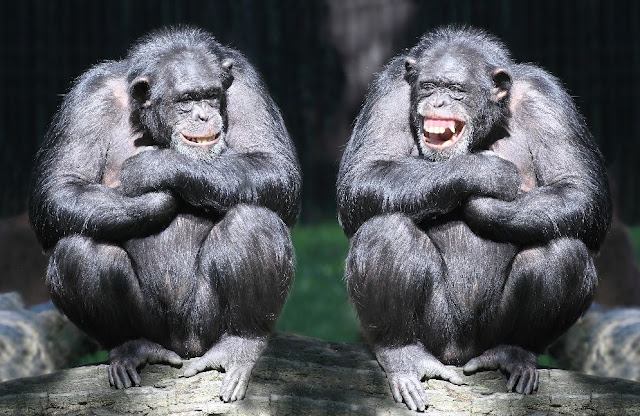








































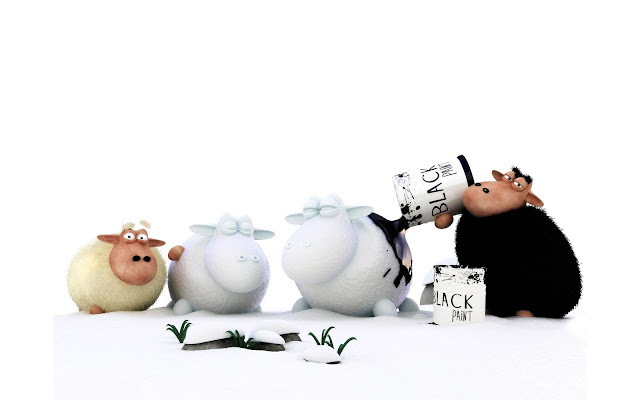







.jpg)


























.webp)















.jpg)






















